






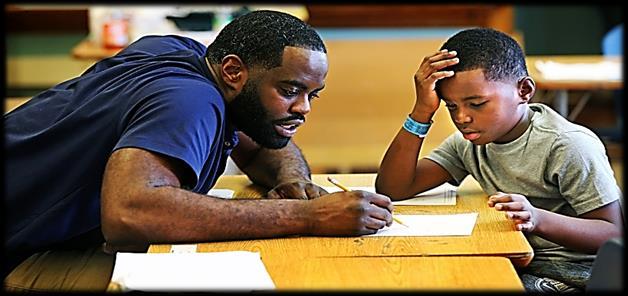





















Volume 1 | Number 2 | 2025





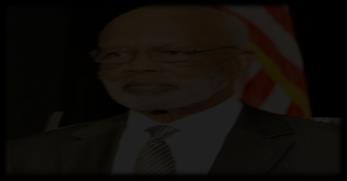



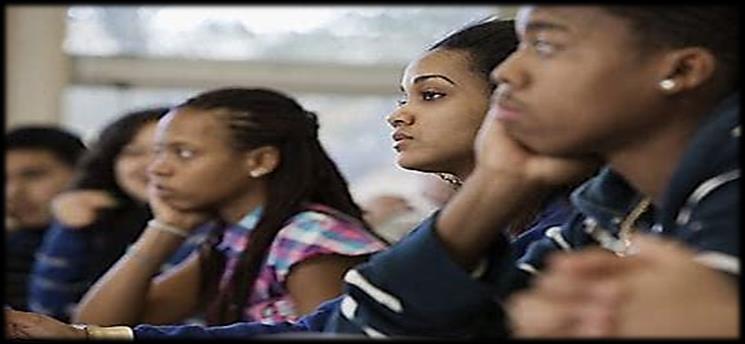
Legacy Founder
Dr. JamesA. Johnson
Chief Editor
Dr. Brian L. Matthews
Higher Education and Research Commission Chair
Texas A&M University-Texarkana, U.S.A
Editorial Peer Reviewers
Dr. Brian L. Matthews
Higher Education and Research Commission Chair
Texas A&M University-Texarkana, U.S.A.
Dr. Michelle Fennick
Lamar University, U.S.A.
Dr. Jeffrey Miller
Dallas College, U.S.A.
Dr. Queinnise Miller
University of Houston-Clear Lake, U.S.A.
Calls for papers are announced annually and guidelines are featured in the Dr. JamesA. Johnson Research Institute Proposal.
© 2025 TABSE Research Journal. No part of this periodical may be reproduced without consent of its editors. Requests for permission should be sent to its editors.
ResearchArticles
Audit culture: High school teachers' perspectives on following required practices and protocols in professional learning communities
Black girls deserve to be girls:Acomparison of school-based social and emotional practices on the impact of discipline rates ofAfricanAmerican middle school girls
Reclaiming the humanity of students:Aholistic path forward during a mental health crisis
Exploring middle school core content teachers’perspectives of implementing social
Dismantling barriers: Exploring perceptions, challenges, and strategies for recruiting and retainingAfricanAmerican male leaders in K-12 schools
Magis……………………………………………………………………………………
Editorial Statement
Annually, TABSE Research Journal (TRJ) seeks to publish completed research papers submitted to the Dr. James A. Johnson Research Institute during the annual TABSE State Conference that address diverse challenges facing and present findings that benefit students of African descent and educators who serve them at the K-12 and post-secondary levels in the State of Texas and afar. We consider “value-added” papers with diverse topics, framings, methods, and resolutions that reflect this range and are open to papers with a developed problem statement, perspective(s) or theoretical framework, methods and procedures, results and conclusions, and the educational or scientific importance of the study We also consider TRJ an effective tool in reaching a broader audience in hopes of effectuating positive change throughout the state and nation.
More specifically, TRJ encourages papers, empirical or conceptual in nature, that test new theories, re-imagine existing studies, explore interesting phenomena, and innovate a mixture of methodologies that scaffold specific hypotheses and research propositions in the education
field. TRJ supports papers that bolster educational achievement, educability, adequacy, dignity, worth, equity, and quality education.
As a peer-reviewed journal, we periodically screen for scholarly reviewers. TABSE Research Journal (TRJ) is dedicated to advancing research and practice across K–12 and higher education. We publish empirical studies, theoretical analyses, and applied research that explore critical issues in teaching, learning, leadership, equity, policy, and innovation across educational contexts. Peer reviewers should be experts in specific areas of education such as curriculum development, inclusive pedagogy, or educational leadership such to maintain the academic rigor and relevance of our publication. We ask that reviewers have obtained a master’s or doctoral degree in education or a related field, possess expertise or research experience in K–12 or higher education, have published in peer-reviewed academic or professional journals, have experience in the use of current APA style guidelines, and are able to provide reviews within 2–3 weeks of assignment. If you are interested in being a reviewer, please contact TRJ Chief Editor, Dr. Brian Matthews, at bmatthews@tamut.edu for consideration.








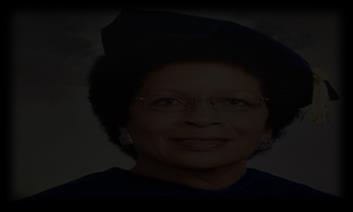




Erin Bradley

TABSE Research Journal Volume 1, Number 1, 2024
Introduction
Received January 14 2024
RevisedApril 1 2024
Accepted May 27 2024
Research has considered the classroom teacher one of the most impactful influences on student learning. Hattie's meta-analyses of global research studies found that teacher influences of credibility and clarity have an effect size of 0.90 and 0.75, respectively (Hattie, 2009).
Nevertheless, No Child Left Behind (2001) and the Every Student Succeeds Act (2015) have transformed the paradigm of teaching and learning by emphasizing standardized testing and compelling school leaders to enforce policy-driven initiatives and strategies to improve instruction. According to Gonzalez, Peters, Orange, and Grigsby (2016), these guidelines rely upon standardized testing to determine student proficiency in state standards and serve as the framework for mandated policies at the state and local levels intended to improve teaching and learning. Researchers have suggested that policies intended to improve instruction through mandates alter teachers' dispositions, reduce autonomy and professionalism, and create audit cultures (Lee & Lee, 2018; Philpott & Oates, 2016). Audit culture is defined as customary practices in which policies are implemented based on performance (Smith & Benavot, 2019).
Professional Learning Communities (PLC) in schools leverage teacher partnerships. The
© Written by Erin Bradley. Published in TABSE Research Journal. Anyone may reproduce, distribute, translate and create derivative works of this article (for both commercial and non-commercial purposes), subject to full attribution to the original publication and author(s).
PLC model, framed by Richard DuFour in the 1990s, was developed involving staff members in the collective inquiry process while supporting continuous growth through collaborative practices (Dufour, 1999). The PLC model has influenced educational policy such as Chapter 149 of The Texas Administrative Code (2014) which maintains that teachers are responsible for actively collaborating with peers and other key stakeholders with the aim of improving practice through professional learning opportunities and reflection. In the current climate where teachers must contend with emerging policies affecting instruction, teachers play an integral role in policy implementation since dispositions control actions and outcomes (Lee & Lee, 2018; Skourdoumbis, 2018). Studies have indicated that required PLC practices and protocols diminish a clear vision and shared decision-making which both are essential for transformational change in organizations (Smith & Benavot, 2019). Additionally, practices devoid of consistent protocols can produce unintended consequences as in Philpott and Oates' (2017) study findings where teachers lacked clarity regarding the planned PLC outcomes. If a common leadership goal is to improve instruction, how do teachers perceive the audit culture phenomena in PLCs?
RQ1: What are the experiences of high school teachers in how required PLC practices and protocols influence planning and instruction?
Agrowing body of research has emphasized PLC effectiveness based on collaborative practices and a gap in the literature revealed the need for further exploration of teachers' perceptions of following required practices and protocols that contribute to audit culture. Driven by initiatives from top-down leadership, Philpott and Oates (2016) asserted that a barrier to transformational change of teachers' practices in PLCs was due to "audit activity". Thereby
making the industry a place where "largely absent in discussions of quality or accountability are the voices and views of those who work, learn, and teach in schools" (Smith & Benavot, 2019, p. 195). Moreover, audit culture in education has increasingly restricted risk-taking and autonomy for teachers in planning and delivering instruction. Teacher insights were needed to inform policymakers and educational leaders of what teachers viewed as limitations to transformative change in an environment of increasing accountability.
Theoretical Framework or Perspective(s)
This study drew upon Neoliberalism. Bureaucrats originally introduced this theory to reduce state involvement in citizens' lives (Rasco, 2020); however, Neoliberalism evolved to impact every political, economic, and social sphere, including education. According to Philpott and Oates (2016), outside examination of teachers' PLC practices undermined the synergy and professionalism needed to produce impactful outcomes for student achievement effectively. Smith and Benavot (2019) purported that authoritarian approaches to mandated policies, devoid of diverse stakeholder input, eroded trust in the system. Consequently, Neoliberalism in education creates challenges for sustainable accountability due to the lack of active involvement and input in the process of all stakeholders. This lack of stakeholder involvement and input creates audit cultures in which Rasco (2020) claimed that standardization as a device in education empowered neoliberal governments to exert complete control over institutions, technologies, curricula, and practices.
Using Luhmann's general social systems theory founded upon key foundations related to subsystems, such as economic and educational, in society (Luhmann, 1995), Thoutenhoofd’s (2017) case study suggested that teaching and learning have transformed into a governmentdriven system of rote practices that rely on standards-based data collection to measure
effectiveness. Moreover, the neoliberal ideal undergirds the educational process in which knowledge is a commodity that can be marketed and privatized, instilling the belief that "one is compulsively and competitively bound to [learning] for life" (Thoutenhoofd, 2017, p. 440). In other words, the owner of knowledge can manipulate those who are powerless, thus becoming subjects perpetually bound to those in control of knowledge.
Various perspectives from a review of the literature covering existing English language research in accountability reform and professional learning communities provided a contextual framework for the study, including the impact of audit culture, teachers' cultural dispositions, and the phenomena affecting PLCs (Lee & Lee, 2018; Smith & Benavot, 2019; Wilcox & Lawson, 2017)
This qualitative study examined high school teachers in Texas who were required to engage in weekly professional learning community activities such as collaboration, lesson planning, reflecting, and focusing on teaching practice and student learning. According to Prenger, Poortman, & Handelzalts (2018), the fast-paced nature of the education industry and the need for teachers to professionally sustain the demands of change required an examination of the internal viewpoints of high school teachers based on required PLC practices. The research findings were critical in determining teachers' PLC experiences in an evolving environment.
Methods and Procedures
To adequately determine high school teachers' experiences of how planning and instruction were impacted by required professional learning community practices driven by audit culture, the researcher implemented a qualitative study. This study used a prequestionnaire, semistructured interviews, and focus group. Although the researcher needed at least eight participants (n = 8) due to saturation in qualitative studies in which sample sizes of six to 12 participants for
interviews of homogenous groups were sufficient (Boddy, 2016), based on the population and sampling methods, the researcher wanted to recruit a minimum of 20 eligible participants. Recruiting more eligible participants than needed for the study intended to aid in ensuring the sample size of eight participants was reached should teachers voluntarily withdraw from the study. The population of (n = 9951) educators from an educational organization’s messaging application and social media site was considered. Due to the large population size, the researcher determined specific eligibility requirements to indicate the target population. This target population included high school teachers in Texas who were required to engage in professional learning community actions with two or more teachers at least one or more times per week. The teachers in this study engaged in professional learning community practices, including collaboration, lesson planning, reflecting on teaching practice, and focusing on student learning. The sampling strategy involved convenience, snowballing, and purposeful sampling. The anticipated sample size due to the shared phenomena of participants captures "the conditions" for generalizability (Osbeck &Antczak, 2021) as the participants in the study included teachers who engaged in PLC actions of at least two or more high school teachers at least one or more times per week.
Atotal of nine teachers (n = 9) were recruited for the study, in which all nine participants engaged in a prequestionnaire (Appendix A) This tool also included a few demographic and preliminary questions related to the study and benefited data collection and the communication of results. Five of the respondents were female and four were male. Four respondents taught 10th grade, one respondent taught 9th grade, and the other four taught multiple grade levels. The subject areas taught included four English II teachers, three World History teachers, two of those teachers also teaching Personal Finance and Economics, and two Biology teachers one teaching
Environmental Systems. One respondent taught from 0-4 years, six of the respondents taught from 9-12 years, and two taught from 17-20 years. The number of school settings in which respondents taught was 1-3 for eight teachers and 4-6 for one teacher.Also, the prequestionnaire featured two questions, for qualified participants, to answer from the interview protocol aligning with the research question. These questions enabled the respondents to share their views relating to planning and instruction, were included in the data analysis and triangulated with the other data sources.
Once eligibility was verified, the first four teachers to respond, followed by a commitment of the signed consent form, participated in semi-structured interviews (Appendix B) and the next four teachers participated in a focus group (Appendix C).
Given that qualitative studies include nonnumerical data (Leedy & Ormrod, 2022), measurement considerations in this study focused on participants' experiences and perspectives in which the researcher engaged in a "naturalistic inquiry [approach] because the research involve[d] real-world issues and settings" (Roberts & Hyatt, 2019, p. 143). Qualitative data collected from the prequestionnaires, semi-structured interviews, and focus group were analyzed for research question one. This analysis determined emerging themes that captured and explained high school teachers' perspectives on how required PLC practices and protocols influenced planning and instruction.
Five categories or patterns emerged from the data sources including a culture of audit, planning and instruction, PLC strengths, PLC challenges, and student foci (Table 5.6).
Table 5.6
Category Prequestionnaire
Culture of audit
Planning and instruction
PLC strengths
• resources
Semi-structured Interviews
• expectations
• protocol
• accountability
• standardization
Focus Group
• audit culture (i.e., required, check the box, follow the book, what they ask us to do, robotic, compliance, insufficient solution)
• standardization
• process
• strategy
• no influence
• self-efficacy
• different teaching style
• routine
• PLC effectiveness (i.e., productivity, collaboration, dedicated PLC time)
• support
• collective efficacy
• cohesion
PLC challenges
Student foci
• lack of collaboration
• student buy-in
• student ownership challenges
• student ownership
• lack of cohesion
• PLC theory vs. PLC reality
• lack of time
• student learning levels
• student work
• student ownership
Based on participants' experiences and the literature reviewed, the researcher concluded that teachers’perceptions of PLC experiences related to the patterns of all five categories stated above varied. For example, although participants from both the focus group and semi-structured interview group referenced patterns related to culture of audit, their perceptions of the phenomena were different. These differences were based on perspectives of systems of standardization including compliant-driven PLC requirements and systems of standardization associated with PLC expectations, protocol, and accountability, respectively. For instance, participant 8 (January 2023) answered, “If it's just, you know, checking boxes. I, I ain't really interested in that. I won't even show up…. I've got better things to do with my time. [laughing]....”
Participant 5 (January 2023) stated:
So, I don't know the PLC, I feel like sometimes it's just like this is the new thing. Somebody wrote a book about it and the principals had to read the book in their training, so they're gonna make us do it too…. I can't do that whole robotic, this is what everybody cookie cutter kind of thing, because the kids are not cookie cutter.
Participant 7 (January 2023) conveyed, “I think the, the PLCs in my experience, it, it's more about compliance, the 504 requirements. It's not, it, it, it's, it's more of a CYAthan care about the student.” When relaying his final thoughts about his PLC experiences he mentioned that teachers are expected to understand how to create rigorous lesson plans, analyze data, manage a multitude of classroom personalities without adequate training
Also, study participants’perspectives of planning and instruction experiences differed in that focus group participants believed that the PLC had no influence on their planning or instruction and instead credited self-efficacy and different teaching styles. In contrast, the semi-
structured interview participants attributed their PLC experiences of planning and instruction based on the PLC process and the strategy. Prequestionnaire respondents credited their PLC experiences to the sharing of resources. The semi-structured interview participants were the only group to mention dominant patterns associated with PLC strengths. The researcher concluded that their perspectives of what makes a solid PLC involved routine, elements of PLC effectiveness, (Table 5.6), support, collective efficacy, and cohesion. In contrast, participants’ experiences of PLC challenges for the focus group consisted of perspectives of lack of cohesion, PLC theory versus PLC reality, and lack of time.
The perspectives of the semi-structured interview participants in the same category were the lack of collaboration.Although the focus group and semi-structured interview group shared PLC experiences of student ownership in the student foci category, the participants’perspectives differed by student learning levels and student work followed by student buy-in and student ownership challenges, respectively.
In an era of increasing accountability in education, if educators are expected to meet the rising demands of accountability through student achievement, administrators and policy makers need to provide sustainable support regarding the existing systems that are available to promote transformational change. The teachers in this study offered their authentic experiences of how required PLC practices and protocols influenced planning and instruction. These experiences were intended to close a gap in the literature that revealed the need for further exploration of teachers' perceptions of following required practices and protocols that contribute to audit culture. Guided by the research question and the literature review, the researcher concluded that participants’PLC experiences varied based on patterns that were or were not evident in the PLC.
For instance, any patterns in the study that identified conditions in the PLC such as lack of cohesion, lack of time, no influence, and standardization, led to the participants’perceptions of audit culture. Conversely, participants’PLC experiences with patterns such as expectations, protocol, process, strategy, support, collective efficacy, and cohesion were similar to studies from the literature review which highlighted contextual factors in the PLC, thus, contributing to transformational change. Based on the findings, the researcher's goal was to inform and provide guidance to educational leaders and policymakers what teachers view as limitations to transformative change in an environment of increasing accountability and what teachers perceived as essential factors based on their experiences with required PLC practices.
The following recommendations are associated with both administrators and policy makers appointed to support teachers in the implementation of the work for required PLCs.
1. Administrators and teachers need sustainable training to understand how to properly engage in collaborative PLC practices. Once sustainable training is obtained, administrators need to support teachers in the PLC process around a shared problem of practice that incorporates clear PLC expectations, protocols, and accountability for successful engagement in the PLC process for transformational change.
2. Administrators need to be intentional when developing a school’s master schedule, about allocating at least two periods per week of common planning time for teachers for collaborative PLC engagement.
3. Administrators need to empower teachers to maintain a level of autonomy through teacher voice and decision-making when engaging in PLC planning and instructional experiences so they can benefit from gaining trust in the process and improve teacher practice through problem-solving, risk-taking, and reflection.
Boddy, C. R. (2016). Sample size for qualitative research. Qualitative market research: An International Journal, 19(4), 426–432. https://doi.org/10.1108/qmr-06-2016-0053
Bradley, E. (2023). Audit culture: High school teachers’ perspectives on following required practices and protocols in professional learning communities [Doctoral dissertation, Saint Leo University]. ProQuest Dissertations and Theses Global.
Commissioner’s Rules Concerning Educator Standards, 19 Texas EducationAgency §149.1001 (2014).
https://texreg.sos.state.tx.us/public/readtac$ext.TacPage?sl=R&app=9&p_dir=&p_rloc= &p_tloc=&p_ploc=&pg=1&p_tac=&ti=19&pt=2&ch=149&rl=1001
Dogan, S., Pringle, R., & Mesa, J. (2016). The impacts of professional learning communities on science teachers' knowledge, practice and student learning:Areview. Professional Development in Education, 42, 569–588.
https://www.tandfonline.com/doi/abs/10.1080/19415257.2015.1065899?journalCode=rjie 20
DuFour, R. P. (1999). Help wanted: Principals who can lead professional learning communities. National Association of Secondary School Principals. NASSP Bulletin, 83(604), 12-17.
https://saintleo.idm.oclc.org/login?url=https://www.proquest.com/scholarlyjournals/help-wanted-principals-who-can-lead-professional/docview/216047344/se-2
Every Student Succeeds Act, 20 U.S.C. § 6301 (2015). https://www.congress.gov/bill/114thcongress/senate-bill/1177
Gonzalez, A., Peters, M. L., Orange, A., & Grigsby, B. (2016). The influence of high-stakes testing on teacher self-efficacy and job-related stress. Cambridge Journal of Education, 47(4), 513–531. https://doi.org/10.1080/0305764x.2016.1214237
Hattie, J. (2009). Visible learning: A synthesis of over 800 meta-analyses relating to achievement. Taylor & Francis Ltd.
Lee, D. H., & Lee, W. O. (2018). Transformational change in instruction with professional learning communities? The influence of teacher cultural disposition in high power distance contexts. Journal of Educational Change, 19(4), 463–488.
https://doi.org/10.1007/s10833-018-9328-1
Leedy, P. D. & Ormrod, J. E. (2019). Practical research: Planning and design. Pearson. Luhmann, N. (1995). Social Systems. Stanford University Press. No Child Left Behind Act of 2001, P.L. 107-110, 20 U.S.C. § 6319 (2002).
https://www.congress.gov/bill/107th-congress/house-bill/1
Osbeck, L. M., &Antczak, S. L. (2021). Generalizability and qualitative research: Anew look at an ongoing controversy. Qualitative Psychology, 8(1), 62–68.
https://doi.org/10.1037/qup0000194
Philpott, C., & Oates, C. (2016). Professional learning communities as drivers of educational change: The case of learning rounds. Journal of Educational Change, 18(2), 209–234.
https://doi.org/10.1007/s10833-016-9278-4
Prenger, R., Poortman, C. L., & Handelzalts, A. (2018). The effects of networked professional learning communities. Journal of Teacher Education, 70(5), 441–452.
https://doi.org/10.1177/0022487117753574
Rasco, A. (2020). Standardization in education, a device of Neoliberalism. Journal for Critical Education Policy Studies (JCEPS), 18(2), 227–255.
Roberts, C., & Hyatt, L. (2019). The dissertation journey: A practical and comprehensive guide to planning, writing, and defending your dissertation. Corwin, a SAGE Company. Skourdoumbis, A. (2018). Theorising teacher performance dispositions in an age of audit. British Educational Research Journal, 45(1), 5–20. https://doi.org/10.1002/berj.3492
Smith, W. C., & Benavot, A. (2019). Improving accountability in education: The importance of structured democratic voice. Asia Pacific Education Review, 20(2), 193–205. https://doi.org/10.1007/s12564-019-09599-9
Thoutenhoofd, E. D. (2017). The datafication of learning: Data Technologies as reflection issue in the system of Education. Studies in Philosophy and Education, 37(5), 433–449. https://doi.org/10.1007/s11217-017-9584-1
Wilcox, K. C., & Lawson, H.A. (2017). Teachers' agency, efficacy, engagement, and emotional resilience during policy innovation implementation. Journal of Educational Change, 19(2), 181–204. https://doi.org/10.1007/s10833-017-9313-0
APPENDICES
APPENDIX A: Prequestionnaire
1. Are you a high school teacher in Texas? Yes or No
2. Do you engage in professional learning community meetings of at least 2 or more teachers weekly? Yes or No
3. Do you engage in professional learning community meeting protocols (i.e., norms, lesson planning, common assessments, etc.) Yes or No
If you answered no to any of the questions above, you are not eligible for participation in this study. Thank you for your interest.
If you answered yes to all three questions, you are eligible for participation in this study. Please continue with answering the few remaining questions in the prequestionnaire and return the attached consent form in your email to erin.bradley@email.saintelo.edu for participation in the study.
What grade level(s) do you teach? ___ What course(s) do you teach? _________
Gender ______
Number of school settings? ____
Years of teaching experience? _______
What is your highest attainment of education?______
1. How is your experience collaborating/working together with peers in the PLC?
2. How has PLC planning influenced how you teach your lessons in the classroom?
Thank you for your time and willingness to complete this prequestionnaire and to participate in this study.
APPENDIX B: Semi-Structured Interview Protocol
Opening Question:
1. Tell me about yourself.
• What grade level and course(s) do you teach?
• How long have you taught? Which grade levels and/or subjects?
• Overall, how would you characterize your experiences with teaching in education?
Research question one.
What are the experiences of high school teachers in how required PLC practices and protocols influence planning and instruction?
Planning
2. What are your experiences with the PLC planning process?
• How do you plan for units and/or lessons in the PLC?
• How do you design formative and summative assessments in the PLC?
• How do you analyze student work in the PLC?
• How is your experience collaborating/working together with peers in the PLC?
Instruction
3. How have your experiences with the PLC planning process influenced instruction in your classroom?
• How has PLC planning influenced how you teach your lessons in the classroom?
• How has PLC planning influenced how you communicate with students about what they need to learn and how they master the learning standards?
• How has PLC planning influenced your implementation of student-centered learning experiences?
• How has PLC planning influenced your design of tiered instruction for students?
4. What other information would you like to provide about your experiences in the PLC process?
APPENDIX C: Focus Group Protocol
Opening Question:
1. Tell me about yourself.
• What grade level and course(s) do you teach?
• How long have you taught? Which grade levels and/or subjects?
• Overall, how would you characterize your experiences with teaching in education?
Research question one.
What are the experiences of high school teachers in how required PLC practices and protocols influence planning and instruction?
Planning
2. What are your experiences with the PLC planning process?
• How do you plan for units and/or lessons in the PLC?
o Tell me more…
o Can you give me an example?
o Is this similar or different in your experience? Please explain.
• How do you design formative and summative assessments in the PLC?
o Tell me more…
o Can you give me an example?
o Is this similar or different in your experience? Please explain.
• How do you analyze student work in the PLC?
o Tell me more…
o Can you give me an example?
o Is this similar or different in your experience? Please explain.
• How is your experience collaborating/working together with peers in the PLC?
o Tell me more…
o Can you give me an example?
o Is this similar or different in your experience? Please explain.
Instruction
3. How have your experiences with the PLC planning process influenced instruction in your classroom?
• How has PLC planning influenced how you teach your lessons in the classroom?
• How has PLC planning influenced how you communicate with students about what they need to learn and how they master the learning standards?
• How has PLC planning influenced your implementation of student-centered learning experiences?
• How has PLC planning influenced your design of tiered instruction for students?
• What other information would you like to provide about your experiences in the PLC process?
Black girls deserve to be girls
Black girls deserve to be girls: A comparison of school-based social and emotional practices on the impact of discipline rates of African American middle school girls
Kristi Morale

TABSE Research Journal
Volume 1, Number 1, 2024
Introduction
Received January 15 2024
Revised April 1 2024
Accepted May 27 2024
On May 22, 1962, Malcolm X gave a speech in Los Angeles to and about Black women where he stated, “The most disrespected person in America is the Black woman. The most unprotected person in America is the Black woman. The most neglected person in America is the Black woman” (Alexander Street, 2014). Over 60 years later, this statement still rings true across the United States, including in U.S. schools where Black girls are disrespected, unprotected, and neglected day after day.
Black women have traditionally led the way in advancing educational equity in the Black community. However, Black girls still face substantial obstacles to achieving in the classroom today. While there is abundant research on the discipline disparities facing Black boys in the public school system, Black girls are missing from these conversations. The lack of academic literature on the plight of Black girls in schools leads to the assumption that the futures of Black girls are not at risk (Crenshaw et al., 2015). Each day, Black girls face a variety of factors that heighten their risk of underachievement and detachment from school (Crenshaw et al., 2015). These factors contribute to Black girls being criminalized by their schools, the very places that
© Written by Kristi Morale. Published in TABSE Research Journal. Anyone may reproduce, distribute, translate and create derivative works of this article (for both commercial and non-commercial purposes), subject to full attribution to the original publication and author(s).
should help them thrive (Morris, 2016). This study sought to identify the effect of social and emotional learning on the impact of discipline rates of African-American middle school girls. A sequential exploratory mixed methods design was used in which the researcher analyzed the effect of social and emotional learning practices on Black girls' discipline experiences. This study contributes to the research on the social and emotional well-being of Black girls by giving them a voice to share how they are doing in our schools and how they believe we can better support their needs. To assess the impact of social and emotional practices on the discipline rates of middle school girls, the following questions were sought:
RQ1: Are there any differences between middle schools that utilize social and emotional learning practices and middle schools that do not use social and emotional learning practices on in-school suspension rates among Black girls?
RQ2: Are there any differences between middle schools that utilize social and emotional learning practices and middle schools that do not use social and emotional learning practices on out-of-school suspension rates among Black girls?
RQ3: Are there any differences between middle schools that utilize social and emotional learning practices and middle schools that do not use social and emotional learning practices on Disciplinary Alternative Education Programs (DAEP) rates among Black girls?
RQ4: In what ways do social and emotional learning practices affect the emotional wellbeing of middle school Black girls?
Review of the Literature
The Criminalization of Black girls in Schools
According to a report by the National Black Women’s Justice Institute, Black girls are 7xs more likely to receive one or more out-of-school suspensions, 4xs more likely to be arrested, and 4xs more likely to receive one or more in-school suspensions in comparison to White female
students (National Black Women’s Justice Institute & Inniss-Thompson, 2018). Even though there have been established racial inequities in school discipline since the 1970s, disparate punishment practices' effects on Black girls have only recently been studied (Smith-Evans et al., 2014). According to data from 2006–2007, Black girls in urban middle schools experienced the most significant rate of suspension growth of any demographic (Losen et al., 2010).
Compared to 12 percent of Black girls, only 2 percent of White Girls experienced exclusionary suspensions (Crenshaw et al., 2015). The relative risk of suspension is higher for Black girls compared to White Girls than for Black boys compared to White boys, indicating that race may play a more significant role for girls than boys (Crenshaw et al., 2015). While Black boys and Black girls both suffer a racialized risk of punishment at school, Black girls statistically have a higher risk of suspension and expulsion than other pupils of the same gender (Crenshaw et al., 2015). More data on the disciplinary experiences of Black girls is required to properly comprehend how unfair discipline practices affect the achievement and social adjustment results of Black children overall (Blake et al., 2011).
In the book, Sing a Rhythm, Dance a Blues, Morris (2019) shares a model school that supports the social and emotional well-being of Black girls after researching the criminalization of Black girls, Stephanie Patton, a middle school principal in Columbus, Ohio, decided that the campus would no longer punish students for bad attitudes. In place of exclusionary discipline practices, a plan was created that included social and emotional learning practices. Black girls would participate in mentoring, positive behavioral interventions and supports, and restorative conferencing. Girls would begin the day with an advisory program that promoted girls' self-worth, communication skills, and goal-setting. The campus began to use
suspensions only as a last resort. Along with the new discipline plan, the campus also created a visually stimulating Social Emotional Learning (SEL) environment with positive quotes around the building and calming spaces for girls to regroup or reflect before or after a conflict. With these initiatives in place, campus attendance increased, and suspensions decreased. Zero students were expelled, and student ownership of conflict improved.
Conceptual Framework
Social Emotional Learning
Social Emotional Learning (SEL) is defined as “the process through which all young people and adults acquire and apply the knowledge, skills, and attitudes to develop healthy identities, manage emotions and achieve personal and collective goals, feel and show empathy for others, establish and maintain supportive relationships, and make responsible and caring decisions” (CASEL, 2022, para. 1). Research shows that SEL education has positively affected various outcomes, including academic performance, good relationships, mental wellness, and more (CASEL, 2022). Specifically, SEL instruction can lead to less emotional distress, fewer disciplinary incidents, increased school attendance, and improved test scores and grades (Clark, n.d.). Schools implementing SEL practices have a culture where students and teachers respect one another (Positive Action Staff, 2022).
Black Girlhood Theory
Ruth Nicole Brown (2009) defines Black Girlhood as “the representations, memories, and lived experiences of being and becoming in a body marked as youthful Black and female” (Brown, 2009, x). The study of Black Girlhood focuses on the social and cultural experiences of Black girls Black Girlhood Studies, emphasize how Black girls bring valuable insights into the deficit-based narratives (Wright, 2016). “Black Girlhood makes possible the affirmation of Black girls’ lives and, if necessary, their liberation” (Brown, 2013, p. 1). It is
essential to investigate how Black girls still enjoy and express childhood delight and creativity despite the oppressive institutions that they face (Epstein et al., 2017). Black girlhood can be a powerful weapon for Black girls to establish safe places for themselves and each other despite how society views them (Brown, 2009, p. 2).
Research Design
Quantitative Population
The first campus in the study is Sampson Middle School. Sampson Middle School is a public school in a large suburban setting. Sampson Middle School does not employ any specific social and emotional learning practices. The two campus counselors are available upon request from students and teachers to support the students' mental health. The second campus in the study is Malcolm Middle School. Malcolm Middle School is a magnet school located in a large city setting. The campus employs two full-time counselors and one full-time social worker. This campus also has the support of a district Teacher Behavior Specialist who supports the campus as the Social Emotional Learning Coordinator. Malcolm Middle School has a customized social and emotional learning program for scholars on campus. The campus counselors are available upon request from students and teachers to support the students' mental health.
Qualitative Population
The qualitative sample comprised nine self-identified Black girls who attended the two different middle schools. Four girls were interviewed from Malcolm Middle School, a campus that utilizes social and emotional learning practices, and five from Sampson Middle School, a campus that does not. The girls' grade range was sixth to eighth, with two girls in 6th grade, four in 7th grade, and three in 8th grade. Convenience sampling was used to recruit interview participants.
Quantitative Instrument
For the quantitative part of the research study, pre-existing discipline data was used from the two participating campuses. The data set included the in-school suspension rates, out-of-school suspension rates, and DAEP rates for the Black girls attending the campuses.
Qualitative Instrument
An interview was conducted to assess the participants' social and emotional well-being. The thirteen-question questionnaire, which included questions in each of the five CASEL (Collaborative For Academic, Social, and Emotional Learning) Competencies, included ten open-ended questions, one yes or no question, and two Likert scale questions, with answer choices being always, very frequently, occasionally, rarely, very rarely, and never.
Quantitative Data Collection
The two participating campuses provided the datasets used in the quantitative analysis. Each report included the student's discipline occurrence, grade level, race, and sex. Raw data included girls of all races but was split to allow for the interrogation of only Black girls' discipline occurrences from the 2021-2022 school year.
Qualitative Data Collection
Girls were interviewed individually in a private office, and the interviews lasted approximately 10 minutes. The responses were audio recorded. In addition, the researcher took notes during the data collection to assist in the analysis process. Only the researcher had access to recorded materials and digital notes.
Quantitative Data Analysis
A t-test was used to compare the data from each campus using the campus discipline report results. The t-test compared the mean of the two groups to determine whether the campus
that utilizes social and emotional learning practices has a higher, lower, or the same discipline rate as the campus that does not implement social and emotional learning practices.
The interviews were audio recorded for transcribing purposes. The audio recordings were transcribed using the Otter Transcription Tool and then transcribed again by the researcher. During the transcription process, all participant names were replaced with pseudonyms. Following transcription, the researcher analyzed the interviews and identified common themes. Once the common themes were identified, the researcher summarized the results to determine the effects of social and emotional learning practices on the emotional well-being of the girls.
Quantitative Findings
The quantitative analysis addressed all three research questions presented.
RQ1: Are there any differences between middle schools that utilize social and emotional learning practices and middle schools that do not use social and emotional learning practices on in-school suspension rates among Black girls? An independent samples t-test was conducted to compare the mean scores of the two groups of participants. The results were t = 3.771 p = .001. This data shows a more significant occurrence of in-school suspension assignments at Sampson Middle School, a campus that does not engage in social and emotional learning practices. Zero Black girls at Malcolm Middle School were assigned in-school suspension as a discipline sanction during this school year. This data suggests that the use of social and emotional learning practices has a positive effect on the in-school suspension rates of Black Middle School Girls
RQ2: Are there any differences between middle schools that utilize social and emotional learning practices and middle schools that do not use social and emotional learning practices on out-of-school suspension rates among Black girls? An independent samples t-test was conducted
to compare the mean scores of the two groups of participants. The results were t = -2.238, p = .030. This data shows that while both campuses assigned out-of-school suspension to Black girls as a disciplinary practice, administrators at Sampson Middle School were almost three times more likely to give this punishment than administrators at Malcom Middle School. This data suggests that the use of social and emotional learning practices has a positive effect on the outof-school suspension rates of Black Middle School Girls.
RQ3: Are there any differences between middle schools that utilize social and emotional learning practices and middle schools that do not use social and emotional learning practices on DAEP rates among Black girls? An independent samples t-test was conducted to compare the mean scores of the two groups of participants. The results were t = -.899, p = .373. The outcome was not statistically significant, indicating that social and emotional learning practices did not affect the DAEP rates of middle school Black girls.
The qualitative portion of this study aimed to analyze the voices of the Black girls attending Malcolm Middle School and Sampson Middle School. The data yielded significant findings on the emotional well-being of Black Middle School Girls. Ultimately, the girls shared their experiences with the social and emotional learning practices facilitated on their campus.
There was a noticeable difference in responses between the girls at the two campuses regarding relationship building. The participants from Malcolm Middle School all believed that their teachers had made a concerted effort to build a relationship with them, while all but one of the participants from Sampson Middle School shared a negative outlook on one or more of their teachers in this area.
In the area of responsible decision-making, the participants, almost across the board, understood that they should try not to engage in a conflict or to seek help from an adult should a conflict or problem arise. All participants understood the decision-making process and spoke to thinking through a decision before making a choice and understanding how their choices could affect themselves and others. In response to the question on needing a break, all of the girls from Malcolm Middle School understood that they could go to their counselor or social worker, with one describing a calming corner where she sometimes goes and works inside the counselor's office. While the participants from Sampson Middle School all shared that there is a space where they could take a break if needed, many of the girls' first response was the hallway or the bathroom.
Regarding having a trusted adult on campus, all of the girls from both campuses, except one, shared that they trust at least one adult on campus. For many participants, this person was either the counselor, social worker, or administrator on the campus. When discussing preparing for the future, many girls at both campuses noted that they have participated in classes or projects to help them plan for the future. However, some girls could only share the athletic activities they participated in as preparation for their futures.
In the area of emotional safety, most of the girls from both campuses stated that they only feel safe occasionally, with three participants sharing that they rarely feel emotionally safe. When engaging with individuals different from them, most girls expressed no different feelings, including sometimes, you cannot even notice other people’s differences. A few of the girls did convey a sense of awkwardness when first around individuals with differences. When presented with an opportunity to share anything else related to their social and emotional well-being and their school, some of the participants from Sampson Middle School
believed that their campus should make staffing changes due to the teachers not caring about their needs and or stereotyping them based upon their race or past behavior. One participant from Malcolm Middle School expressed that they need more counselors to support the campus as the social worker spends most of their time working on other tasks for the campus.
Interpretation
Ultimately, the girls feel that their social and emotional needs are being fostered on both campuses, while there are noticeable differences in structure from one campus to the other. At Malcolm Middle School, it was evident from speaking with the girls that the personnel on the campus are making a concerted effort to support their social and emotional needs. While many of the staff at Sampson are also making a valiant effort to support the girls, it was evident that these efforts are being made independently and not due to specific training or resources from the campus or the district. This shows up in the suspension data, where the girls on this campus are more likely to be subjected to in-school suspension, out-of-school suspension, and DAEP referrals than those at Malcolm Middle School. Although it is incredible that these educators are making an effort to build relationships with the girls they serve while also being a trusted adult they can turn to in a time of need; there should be an effort made to ensure that all staff have the training and resources to best support the social and emotional well-being of not just the Black girls on the campus but the entire diverse student body.
1. Social and emotional programming should be utilized to foster inclusive learning environments and teach scholars the tools needed to become well-rounded adults.
2. Leaders should investigate alternative forms of school discipline that can solve student discipline issues without excluding students from the campus culture.
3. Campus leaders should frequently analyze discipline data and policies by student population to understand the trends and create a plan of action.
4. To best support the whole child, teachers must receive training to best support the student demographic they serve.
5. Campuses should be staffed with trained and certified counselors to support students.
6. Policymakers should ensure an equal approach to funding that supports the needs of both men and boys and women and girls.
7. Policymakers should mandate intervention practices before girls can be removed from school for subjective offenses.
The premise of this study was to understand the scope of social and emotional learning practices on the discipline rates of Black Middle School Girls. Black girls in this study were considered more than a subject but as the voice. This research is a step in finding ways that stakeholders can work together to solve issues Black girls are plagued with daily in schools. In summary, more is required from educators, administrators, parents, and lawmakers to guarantee that Black girls can access equitable schooling. Black girls deserve the necessary support to heal and learn because of the conditions in their schools, not despite them.
1. How have your teachers and other school personnel attempted to build a relationship with you?
2. What strategies have you been taught for building relationships with others?
3. What conflict resolution techniques have you been taught this year?
4. What problem-solving strategies have you been encouraged to use this year?
5. Where can you go on campus if you need to take a break?
6. If you need someone to talk to, is there someone on campus that you trust? Yes/No
7. What activities have you done this year to plan for the future?
8. How often do you feel emotionally safe at school? Always, Very Frequently, Occasionally, Rarely, Very Rarely, Never
9. How often are you able to identify your emotions? Always, Very Frequently, Occasionally, Rarely, Very Rarely, Never
10. What steps do you take when you have to make a decision?
11. How do you feel when you are around people who are different from you?
12. When conflict arises between you and another person, what steps do you take to diffuse the situation?
13. Is there anything else you would like to share with me about your social-emotional needs or your school?
Relationship Skills
Relationship Skills
Responsible-Decision Making
Responsible-Decision Making
Self-Awareness
Self-Management
Self-Management
Social-Awareness
Self-Awareness
Responsible Decision Making
Social Awareness
Responsible-Decision Making
All Competencies
References
Alexander Street. (2014). Malcolm X: “Who taught you to hate?” speech excerpt. Alexander Street.
https://search.alexanderstreet.com/preview/work/bibliographic_entity%7Cvideo_work%7 C2785586
Blake, J. J., Butler, B. R., Lewis, C. W., & Darensbourg, A. (2011). Unmasking the inequitable discipline experiences of urban Black girls: Implications for urban educational stakeholders. The Urban Review, 43(1), 90–106.
Brown, R. N. (2009). Black girlhood celebration: Toward a hip-hop feminist pedagogy. Peter Lang.
Brown, R. N. (2013). Hear our truths: The creative potential of Black girlhood. University of Illinois Press.
Clark, A. (n.d.). Social emotional learning: What to know. Understood.org.
https://www.understood.org/en/articles/social-emotional-learning-what-you-need-toknow
Collaborative for Academic, Social, and Emotional Learning (CASEL). (2022). What does the research say? https://casel.org/fundamentals-of-sel/what-does-the-research-say/
Crenshaw, K. W., Ocen, P., & Nanda, J. (2015). Black girls matter: Pushed out, overpoliced and underprotected. African American Policy Forum.
https://www.aapf.org/_files/ugd/62e126_4011b574b92145e383234513a24ad15a.pdf
Epstein, R., Blake, J., & González, T. (2017, June 27). Girlhood interrupted: The erasure of Black girls' childhood. The Georgetown Law Center on Poverty and Inequality.
https://genderjusticeandopportunity.georgetown.edu/wpcontent/uploads/2020/06/girlhood-interrupted.pdf
https://genderjusticeandopportunity.georgetown.edu/wpcontent/uploads/2020/06/girlhood-interrupted.pdf
Losen, D. J., Skiba, R. J., & Gagnon, J. (2010, September 13). Suspended education suspended education. Southern Poverty Law Center. https://civilrightsproject.ucla.edu/research/k12-education/school-discipline/suspended-education-urban-middle-schools-incrisis/Suspended-Education_FINAL-2.pdf
Morris, M. W. (2016). Pushout: The criminalization of Black girls in schools. New Press. Morris, M. W. (2019). Sing a rhythm, dance a blues: Education for the liberation of Black and brown girls. New Press.
National Black Women's Justice Institute & Inniss-Thompson, M. N. (2018). Summary of discipline data for girls in U.S. public schools: An analysis from the 2015 - 2016 U.S. Department of Education office for civil rights data collection. National Black Women's Justice Institute. https://www.nbwji.org/_files/ugd/0c71ee_9506b355e3734ba791248c0f681f6d03.pdf
Positive Action Staff. (2022, January 19). Social emotional learning history: An intriguing guide. Positive Action. https://www.positiveaction.net/blog/sel-history
Ricks, S. A. (2014). Falling through the cracks: Black girls and education. Interdisciplinary Journal of Teaching and Learning, 4(1), 10–21.
https://files.eric.ed.gov/fulltext/EJ1063223.pdf
Skiba, R. J., Peterson, R. L., & Williams, T. (1997, August). Office Referrals and Suspension: Disciplinary Intervention in Middle Schools. Education And Treatment of Children, 20(3).
Smith-Evans, L., George, J., Goss Graves, F., Kaufmann, L. S., & Frohlich, L. (2014). Unlocking opportunity for African American Girls: A call to action for educational equity. NAACP Legal Defense and Educational Fund. https://www.naacpldf.org/wpcontent/uploads/Unlocking-Opportunity-for-African-American_Girls_0_Education.pdf
Wright, N. S. (2016). Black girlhood in the nineteenth century. University of Illinois Press.
Michael Allen

TABSE Research Journal
Volume 1, Number 1, 2024
Introduction
Received January 15 2024
Revised March 31 2024
Accepted May 27 2024
Many people believe that schools are designed to serve as high quality institutions of academic and social development for students. As education in the United States becomes more complex for current students, it has become very difficult to identify how to support parents, educators and students. Over the last 5 years in particular, there have been a number of concerning data points and trends including inconsistent academic performance on standardized tests, a rapid decline in student attendance and a notable increase in depression, suicide and physical violence in schools in America that seems connected to the mental health crisis.
As educators all over the country struggle with the cumulative weight and impact of the learning loss for students, perhaps no measure has been more pronounced since the pandemic than standardized test scores. In fact, NPR published an article indicating that according to data released by the National Assessment of Educational Progress, reading and math scores in the United States dropped to the lowest levels in decades over the last few years. Specifically with respect to the 2022-23 academic year, the average scores in math declined by 9 points and the scores in reading declined by 4 points respectively when compared to the 2019-2020 academic year. The math results were even more staggering when you factor in race and gender. For example, scores on average decreased by 11 points for female students and 7 points for male
© Written by Michael Allen. Published in TABSE Research Journal. Anyone may reproduce, distribute, translate and create derivative works of this article (for both commercial and non-commercial purposes), subject to full attribution to the original publication and author(s).
students over this same period of time. Similarly, for black students, math scores dropped by 13 points compared to a 6-point drop for white students. With all things considered, the academic performance gap between black and white students widened from 35 points to 42 points during this period (Carillo, 2023).
The same dismal trend has held true for student attendance as schools all over the United States have seen a rise in chronic absenteeism. In fact, “72 percent of U.S. public schools reported an increase in chronic absenteeism among their students” when compared to a typical year before the pandemic (James, 2022).
Along the same path, the Center for Education Statistics published a study indicating that “80 percent of public schools reported that the COVID-19 pandemic has negatively impacted student socio-emotional development during the 2021–22 school year” (James, 2022). The same study went on to assert that public schools all across the country reported needing “more support for student and/or staff mental health (79 percent), training on supporting students’ socioemotional development (70 percent), hiring of more staff (59 percent), and training on classroom management strategies (50 percent)” (James, 2022).
The final point underscores the current impact that all of the factors highlighted above have had on students as well as the concerning ways that youth have responded. In 2021, the Centers for Disease Control and Prevention conducted a national Youth Risk Survey. The survey revealed that 42 percent of youth reported feelings of persistent sadness or hopelessness. 22 percent of youth from the same survey reported that they considered suicide, 18 percent made a suicide plan, and 10 percent reported that they attempted suicide.
As a result, educational researchers and practitioners have been charged with the tremendous task of identifying some solutions to improve this reality for students in schools.
As alluded to above, more than identifying what accounted for the problem, the research sought out some important concepts and ideas to support leaders with respect to how to respond to this reality.
The research unpacked the need for people's "humanity" to be considered more through tangible, practical and explicit means. Humanity was defined as the ability to connect with all forms of human life.
Current and future administrators must be prepared for the challenges associated with leading schools in a post pandemic society. Labby et al. (2012) conducted a study that focused on examining if there was a link between effective leadership skills, best practices and student achievement. The research specifically analyzed the role that principals assume with respect to improving student achievement. The study concluded that the total direct and indirect effect that leadership can have on improving student achievement is upwards of about one quarter of the total school effect (Allen, 2018). It is clear that the principal’s leadership is a strong contributor to student achievement and school success. This same body of research suggested that if we aren’t intentional with how we improve school leaders' capacity, the cumulative impact will result in good teachers eventually leaving the schools, especially in urban educational environments (Khalifa, Gooden & Davis, 2016). Principals are one of the few roles that can enable them to “shape growth-enhancing climates that support adult learning as they work to manage adaptive challenges” (Dragp-Severson, 2012, p. 1). The information clearly outlines the reality that school leaders' decisions and behaviors can have a profound impact on student learning environments with respect to teaching and learning. However, the research sought out to identify a leadership approach that meets the present complexities in schools. Further, there has been a growing amount of studies that suggest that the leader’s
emotional intelligence can significantly shape leadership choices. Daniel Goleman spent a large amount of time researching the various components of leadership and his research determined that the most skilled 21st century leaders demonstrate a high level of emotional intelligence. Emotional intelligence is the ability to manage a person’s own emotions in an effort to be directly sensitive to the needs of others. The essential elements of emotional intelligence include: self-awareness, self-management, motivation, empathy, and social skills. Without emotional intelligence, a person could have elite technical training, superior analytical skills and a countless flow of sharp ideas but will likely struggle with having success in the current landscape of leadership (Allen, 2018). “Emotional intelligence is the path [where when] we start it we are to move towards personal, team, and whole school excellence” (Brearley, 2006, p. 30). Presently, in the field of education the principal’s ability to effectively display social awareness, empathic behavior, strong decision making skills, and exert a positive influence over others is essential. As profound as the studies are as described as above, all were conducted before the pandemic. As a result, the research attempted to zero in on a consistently preferred leadership approach that focused on the foundations of emotional intelligence while also showing the potential to support the unique challenges in schools related to mental health etc.
Since the onset of the pandemic, Rasmus Hougaard and Jacqueline Carter (2021) published an article that highlighted the findings of a study that they conducted with leaders from more than 5,000 companies in over 100 countries. Their research set the stage for what has been coined "humane" leadership. In short, it is a modern version of emotional intelligence infused into leadership that could enhance the current state of K-12 education. Humane leadership is a unique display of combining both wisdom and compassion in the decision making process of leaders. It asserts that success is connected to culture in the workplace and culture is correlated to the decisions that leaders make. In order to radically improve success leaders must consider and prioritize: 1) The golden rule, 2) listen intently, 3) introspection, and
4) stretch people to see their potential. While the study focuses on humane leadership practices in businesses and other corporate organizational structures different from schools, the essential elements of the leadership framework appear to be transferable to the K-12 school setting.
The goal for this informal qualitative study was to combine the findings of Hougaard and Carter's study with the benefits of emotional intelligence in an effort to support the reality that schools are currently experiencing with respect to the mental health crisis. The qualitative research was specifically trying to consider the value of applying humane or compassionate leadership decisions in real time in the field of education to neutralize the effects of the mental health crisis on schools. The research questions for the study were:
1. Are there specific types of responses that can be used by leaders in the public school system to prioritize the humanity of students?
2. Similarly, are there aspects of humane leadership that can support how students respond to the mental health crisis in schools?
The hypothesis was that there are consistently preferred responses and actions that leaders can take in schools to ensure that students feel that their humanity is prioritized and there are aspects of humane leadership in particular that can support students as they tackle the day-to-day challenges connected to the mental health crisis.
Through semi-structured interviews with 111 students, parents, staff, and school and district leaders in the United States, the researcher was able to unearth some implications for leaders that can be used to inform the field of education at the systems level. For each participant, the researcher used a 1-2 minute semi-structured interview to gather perceptions of their needs related to their “humanity” from people connected to schools.
The researcher referred to the process described by Zhang and Wildemuth (2009) to prepare and code the data gathered from the interviews. Each participant’s interview was
recorded and later transcribed. Next, the researcher determined the unit of analysis. It was determined that key words, phrases or ideas would be analyzed in order to allow for the maximum number of participant responses to be compared. Then the researcher developed categories, and a coding scheme, and tested the scheme to ensure that it authentically represented each participant’s responses. The text from the transcriptions was coded and assessed for consistency. Eventually, the researcher reviewed the themes and codes that emerged and made sense of them in order to draw conclusions.
It is important to note that the research revealed that there are some consistently preferred responses and actions that leaders can take in schools to ensure that students feel that their humanity is prioritized. Similarly, there are some aspects of humane leadership that can support students as they tackle the challenges connected to the mental health crisis.
Specifically with respect to the qualitative study that was conducted, there were five distinctive codes that emerged from the research split between two key categories. The first category was described as internal areas and the second was described as external areas. Two important themes emerged from the participants about what types of feelings or support that humans are seeking at our core in an “internal” way. They were categorized as emotional safety and emotional literacy.
1. Emotional safety: is an unconscious desire and need to be authentic to one’s self.
Permission came up often as if it were something that each person could claim internally based on the messages in our environment.
2. Emotional literacy: is our ability to name the various emotions that we experience in our bodies during a given point in time. Again, this area is internal for each person but one’s ability to understand and embrace what is felt could be influenced by the environment or surrounding factors.
Three other important themes emerged from the participants about what types of responses humans are seeking at our core in an “external” way. They were categorized as pure, proximate and humane
1. Pure responses: from a clear mental space. The examples from the research that participants identified included how they perceived that people were often unaware that they were bringing things from outside of the interaction into the space (i.e. strained relationships, financial problems, family sickness, difficult news from the doctor etc.). For example, one participant from the study stated, “I could tell the difference in how I was treated based on the personal things that were going on in my assistant principal’s life. It was the worst while she was going through the process of her divorce.” Moreover, that lack of awareness impacted the inconsistency of how others perceived school leaders' responses.
2. Proximate responses: from the "seat" of the other person impacted by our decisions. The examples from the research that participants identified included taking into account and accepting the lived truth of folks who have a different point of view than you. This could be related to gender identities, culture, sexual orientation etc. The point here is implementing the concept of prioritizing this skill or awareness when making a decision that impacts this particular person or group. For example, a second participant from the study stated, “I just feel like the things that are important to me about me are often in question with the staff. They never give me permission to be all parts of me. I wish they made the time to understand me better.”
3. Humane response: from the purest, warm and connected space of the heart. The
examples from the research that participants identified included holding yourself accountable for treating the person impacted by your decision as you would a beloved friend or family member (whose actions are in part a reflection of you). For example, another participant from the study stated, “I don’t think it’s too much to ask them to treat my baby like they would their own. I don’t expect for them to get everything right but my son, even when he is wrong, shouldn’t be made to feel like a criminal.”
The study provides a practical bridge to not only analyzing the problems attached to the current mental health crisis, but it begins to make connections to holistic best practices that can be used by educators to actively “reclaim” humanity. In a world where school leaders are being stretched thin, it is essential to provide explicit and detailed information on where their time can be best spent in order to offset the impact of the mental health crisis on students in schools.
EQ Domain
Self-Awareness
Self-Management
Social Awareness
Relationship Management
Table 1
Humane Leadership Tenant Humanity Qualitative Study Area (PPH)
Listen Intently Pure, Proximate
Remember the Golden Rule Pure, Proximate, Humane
Introspection / Compassion Pure, Proximate, Humane
Stretch People to See Potential Pure, Proximate
As outlined in Table 1, the research asserts that it is imperative that leaders focus on the key components of emotional intelligence, specifically the tenants outlined in humane leadership as well as the pure, proximate and humane responses as described in the qualitative study. Similarly, Table 1 aids in illustrating the overlap in emotional intelligence with humane leadership as well as the qualitative study. It is important to note that the study can support
school leaders and other people associated with schools in developing a deep understanding of how the current mental health crisis is impacting the education system in the United States and in their own schools; critique emotional literacy and how it is explicitly connected to teaching and learning; assess emotional safety and how it is explicitly connected to teaching and learning in their school; and evaluate best practices that humane or compassionate leaders leverage in order to create culturally inclusive learning spaces that center the humanity of all people as well as determine where these practices are/are not in their school. This research explicitly provides tools and knowledge necessary to address mental health challenges in a holistic manner. For example, one area that was consistently implied by most participants is a need to feel loved. In order to do so, it is imperative that leaders consider a universal definition for adults and students in schools. One example is outlined in Bell Hooks’ piece Love as a Practice for Freedom. She explains that Scott Peck defines love as "the will to extend one's self for the purpose of nurturing one's own or another's emotional or spiritual growth" (Hooks, 1994). Similarly, Forward Promise (2022) published an article that explicitly outlined six ways that schools and communities can aid in the process of reclaiming the humanity of students of color. However, the research of this study asserts that these concepts apply to any person or group of people that have been marginalized in any way. The six approaches include: 1. rejecting negative narratives, 2. finding joy, 3. connecting to culture, 4. embracing authenticity and belonging, 5. looking after mental health needs, and 6. encouraging rest and self-care.
The study had several limitations: (1) The sample size of the research was small (included 111 participants). (2) The participant responses in this qualitative study highlight needs and desires that have not been met and don't factor in feelings after leaders have responded to the needs or desires. (3) While the mental health crisis is a glaring contributor to
the problem that schools are currently facing, it isn’t the only factor or variable. However, this study doesn’t necessarily account for that. As a result, we cannot use the data from this study to generalize that if “key” leaders from schools adjusted their behaviors to fit the findings or recommendations of the study that their schools will immediately improve in universally documented ways. Nonetheless, we can assert that adopting the findings from the study will not undermine or harm inherited structures and functions of schools. (4) As described above, the study focused almost exclusively on the actions and behaviors that leaders can take to influence the conditions experienced by students in schools. However, while we can assert that there are implications to other roles, the study didn’t analyze the impact of other certified and noncertified staff members beyond formal school leaders.
References
Allen, M. (2018). Emotional intelligence (EQ), Generational Status and the ... eCommons.
https://ecommons.luc.edu/cgi/viewcontent.cgi?article=3768&context=luc_diss
Brearley, M. (2006). The Emotionally Intelligent School: Where leaders lead learning. Management in Education, 20(4), 30-31.
https://doi.org/10.1177/08920206060200040701
Carrillo, S. (2023, June 21). U.S. reading and math scores drop to lowest level in decades. NPR. https://www.npr.org/2023/06/21/1183445544/u-s-reading-and-math-scores-drop-tolowest-level-in-decades
Centers for Disease Control and Prevention. (2021, April). YRBSS results. Centers for Disease Control and Prevention. https://www.cdc.gov/healthyyouth/data/yrbs/results.htm
Drago-Severson, E. (2012). New Opportunities for Principal Leadership: Shaping School Climates for Enhanced Teacher Development. Teachers College Record, 114(3), 1-44. https://doi.org/10.1177/016146811211400305
Forward Promise. (2022, August 2). Six ways families and communities can reclaim the humanity of students of color this school year. Forward Promise.
https://forwardpromise.org/blog/six-ways-families-and-communities-can-reclaim-the-hu manity-of-students-of-color-this-school-year/
Hooks, B. (1994). “Love as the practice of freedom.”
https://uucsj.org/wp-content/uploads/2016/05/bell-hooks-Love-as-the-Practice-of-
Freedom.pdf
Hougaard, R., & Carter, J. (2021, November 23). How to be both an effective leader and a good person. Harvard Business Review.
https://hbr.org/2021/11/becoming-a-more-humane-leader
James, E. (2022, July 6). More than 80 percent of U.S. public schools report pandemic has negatively impacted student behavior and socio-emotional development. Press ReleaseMore than 80 Percent of U.S. Public Schools Report Pandemic Has Negatively Impacted Student Behavior and Socio-Emotional Development - July 6, 2022.
https://nces.ed.gov/whatsnew/press_releases/07_06_2022.asp
Khalifa, M. A., Gooden, M. A., & Davis, J. E. (2016). Culturally Responsive School Leadership: A Synthesis of Literature. Review of Educational Research, 86(4), 1272-1311. https://doi.org/10.3102/0034654316630383
Labby, S., Lunenburg, F., & Slate, J. (2012). Emotional intelligence and academic success: A conceptual analysis for educational leaders. NCPEA Publications, Version 1.2.
Zhang, Y., & Wildemuth, B. M. (2009). Qualitative analysis of content. In B. Wildemuth (Ed.), Applications of social research methods to questions in information and library science (pp. 308-319). Westport, CT: Libraries Unlimited.
Exploring middle school
Frank Smith

Volume 1, Number 2, 2025
Received March 4 2025
Revised June 25 2025
Accepted July 27 2025
Middle school (grades 6-8) core content (English language arts/reading, mathematics, science, and social studies) teachers are often unprepared to apply social-emotional learning (SEL) strategies effectively and thus often overlook and underutilize these strategies (Mahoney et al., 2021; Shriver & Weissberg, 2020).As a result, teachers are ill-equipped to address students' social, emotional, and behavioral needs, and become overly reliant on punitive and exclusionary forms of discipline, such as suspensions and expulsions (Bailey et al., 2019; United States Department of Education, 2021).Additionally, the inadequate application of SEL methods might lead teachers to believe they are wasting essential teaching time.
The role of SEL strategies in improving student outcomes is well-documented. Previous research has shown that SEL methods may enhance students' behavioral outcomes and academic performance (Mahoney et al., 2021; Yang et al., 2018).Additional positive student outcomes linked to SEL characteristics are academic engagement, good behavior, and feeling connected to school (CASEL, 2020b; Cipriano et al., 2022). In short, students who benefit from
© Written by Frank Smith Published in TABSE Research Journal. Anyone may reproduce, distribute, translate and create derivative works of this article (for both commercial and non-commercial purposes), subject to full attribution to the original publication and author(s).
learning prosocial behaviors may be disadvantaged if SEL techniques are abandoned (Martinsone et al., 2022).
Prior research indicates that more assistance is needed to increase teachers' use of SEL methods (Mahoney et al., 2021; Yang et al., 2018; Zieher et al., 2021).According to SchonertReichl (2017), the lack of consistency and continuity in implementation originates from misconceptions about how teachers combine instruction in their content and SEL. To reduce barriers that prevent us from more positively responding to students’needs, I argue that teachers require insights into what SEL strategies entail and a better understanding of how to implement efficient and effective SEL strategies in their classrooms.
Understanding teachers' experiences with SEL and the assistance and resources they need for effective implementation is essential for successful implementation of new strategies (Eklund et al., 2018; Schonert-Reichl, 2017; Yang et al., 2018).As such, my research on teachers' experiences with SEL was designed to elucidate what works and does not in the classroom. With such research, teachers would be in a better position to effectively apply SEL principles, which would lead to better student outcomes.
With the above points in mind, I pose two research questions: 1) How do middle school core content teachers describe their use of SEL strategies in their classroom? 2) How do they describe challenges when implementing SEL strategies in their classrooms?
This study's conceptual framework is based on the social and emotional learning framework provided by The Collaborative forAcademic, Social, and Emotional Learning (CASEL) (see Figure 1). The CASEL framework undertakes several efforts and creates

1
Framework for Systemic Social and Emotional Learning (CASEL, 2020b)
exceptional resources to improve and implement SEL practices and policies in schools and educational institutions worldwide (Davis et al., 2021).
For institutions that employ CASEL's SEL framework, the integrated concept focuses on increasing intrapersonal, interpersonal, and cognitive competence. When implemented in schools, CASEL's SEL framework considerably improved social and emotional skills, perspectives, behavior, and academic achievement (Davis et al., 2021; Durlak et al., 2011; Grant et al. 2017; Kasikci & Ozhan, 2021; Kaye et al., 2022).
In this study, I used qualitative phenomenological methods to investigate the lived experiences of core content teachers who have implemented SEL skills in their classrooms. In qualitative research the focus is on individuals’unique perspectives on the world, and the researchers are better positioned to emphasize participants' explanations of the event
or phenomenon under study (Amankwaa, 2016). Moreover, using the phenomenological approach requires narrating the experience to collect detailed descriptions, which serve as the foundation for a reflective structural analysis reflecting the experience's essence (Moustakas, 1994).
For this study, I used a purposeful selection strategy, as it enabled me to choose participants with experience in using SEL methods. The snowball technique was used to gather 10 participants currently teaching core content areas in middle school and who had at least two years of experience teaching SEL strategies in their classrooms. Using thematic analysis, the information derived from the participants was then used to describe a pattern that emerged from the data (Guest et al., 2017). I determined saturation was reached once there were no new themes emerging from interviews.
I recruited participants for the study by posting an invitation with details about the inclusion requirements to the DFW Teachers' Lounge Facebook page.Additionally, I utilized the list of members in the group to send invites through direct message. The invite contained the letter of consent, a summary of the study, and my contact information to volunteer to participate in the study. Individuals who met the study’s criteria and expressed their willingness to participate but could not anticipate their availability in the timeframe I sat were placed on a waiting list to fill potential future vacancies. Communication about vacancies was sent through direct messaging.
Ten participants were purposively selected and represented different core content subjects taught, grade levels taught, years’of experience teaching, genders, and race (see Table 1).
Table 1
Participant Demographics

This qualitative phenomenology study investigated middle school core subject teachers' lived experiences and understandings of utilizing SEL strategies in the classroom. This study sought the approval of the National University’s (NU) Institutional Review Board (IRB) before any data was collected. The National Commission for the Protection of Human Subjects of Biomedical and Behavioral Research (1979) outlines fundamental ethical 5 guidelines for research with human participants. Semi-structured interviews were conducted, and each participant answered 10 open-ended questions. Individual interview conversations were recorded and transcribed manually and electronically using NVivo software to ensure a comprehensive data analysis.Athematic analysis was utilized to identify, interpret, and describe repeated patterns in the data to select codes and construct themes according to their meanings (Kiger & Varpio, 2020; Saldana, 2015; Williams & Moser, 2019).
Participants were assigned numbers 1 through 10 to maintain anonymity. This matched the sequence in which they consented to partake in the research.
Trustworthiness is the standard of qualitative research based on credibility, dependability, confirmability, and transferability (Nowell et al., 2017). In this study, I approached credibility in various ways. To begin, I developed relationships with the research participants at their respective campuses to get to know them better; this procedure is known as prolonged engagement (Bloomberg & Volpe, 2019; Stahl & King, 2020). Triangulation examines the credibility of the information gathered using multiple methods to cross-check the data and identify patterns (Stahl & King, 2020).
Beyond prolonged engagement and triangulation, I used member checking and peer debriefing. Member checking ensured that each study participant's perspective was accurately represented by the participants (Bloomberg & Volpe, 2019; Stahl & King, 2020). Study participants could express their opinions or suggestions about the information presented through member checking.Additionally, I employed peer debriefing with colleagues who offered a neutral point of view to help me analyze the data. Peer debriefing increased the study's accuracy by assessing the data and addressing biases from a different angle (Bloomberg & Volpe, 2019; Stahl & King, 2020).
To ensure dependability of the study, I constructed an audit trail to demonstrate the progression of the study from its inception to data collecting and analysis to ensure the investigation's dependability (Korstjens & Moser, 2018). Field notes and transcripts were taken to ensure the research process was transparent (Korstjens & Moser, 2018; Shenton, 2004). To
address confirmability in the study, a reflexive record of the data was preserved on my external hard drive only the researcher had access to. To ensure neutrality throughout each interview, I employed strategies such as reiterating participant experiences and posing clarifying inquiries (Amankwaa, 2016; Korstjens & Moser, 2018).
Transferability involves whether the findings can be applied in other contexts. If the study is dependable, similar results could be achieved by similar methods in similar settings (Amankwaa, 2016; Shenton, 2004; Nowell et al., 2017). In the study, I addressed transferability by providing readers with detailed descriptions of the research context, including settings, years of experience, grade levels taught, and research participant reactions. This allows readers to determine whether the study was applicable to their specific environment (Amankwaa, 2016; Bloomberg & Volpe, 2019)
Findings
RQI
RQ1 From the lived experiences of middle school (grades 6-8) core content (English language arts/reading, mathematics, science, and social studies) teachers, how do they describe their use of SEL strategies in their classroom? The themes that emerged were SEL Strategies to Relationship Building, SEL Strategies to Self-Regulate, Students Gaining SocialAwareness (Table 2).
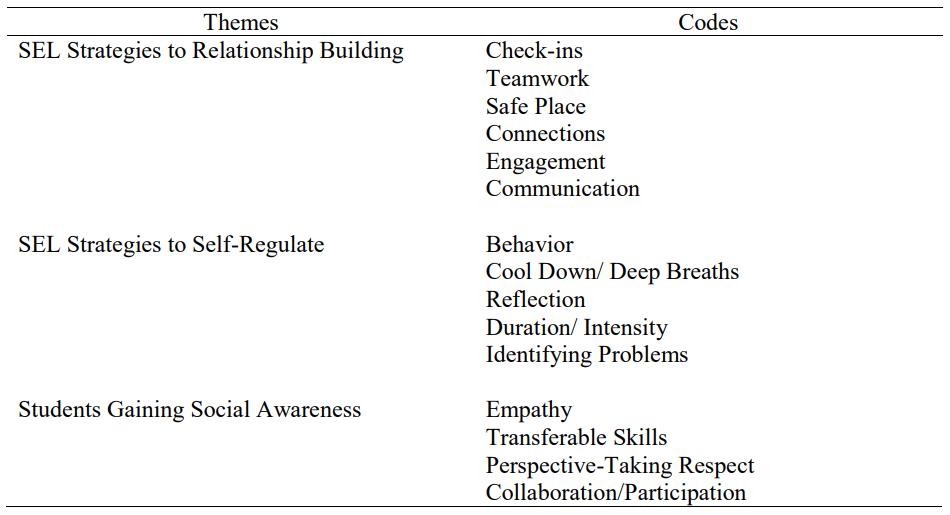
SEL Strategies to Relationship Building The first theme that emerged from the teachers lived experiences was the use of SEL strategies to build relationships with their students and for students to build relationships with their classmates. Participants shared their experiences of using SEL strategies within their classrooms. Teachers who develop meaningful relationships with their students can better tailor their instruction to the unique needs of each student, motivate their students to take an active role in their education, and provide them with the concrete tools they need to succeed in school and life (Elias, 2019).All 10 participants reported using some form of SEL strategies to build relationships with their students. The teachers shared their experiences regarding the value of developing relationships when trying to accommodate the needs of their students.
Participant 3 stated, “I use SEL as way to build a connection with my students. I take the time to learn more about them so that I can meet their needs.” Moreover, teachers noticed that students' engagement increased whenever they talked about themselves. Participant 1 stated,
“I use SEL as way to get to know more about my students…like in the beginning of the year I open up to them so they can get to know me and know that my classroom is a safe place.”
Overall, the participants expressed that developing a rapport with students is essential to creating a positive learning environment where teachers and students can succeed. Participants taught SEL in several ways, including through daily check-in tasks or meetings. Seven out of the ten shared how they do daily check-ins in the morning to get a sense of how their students are feeling for the day. Participant 8 stated,
“I do a daily check-in, and I call it the parking lot…in the parking lot students are allowed to ask me any questions, make suggestions or just tell me how they’re doing. I want them to have a safe place where they can come to and know that someone have their back.”
Participants 4, 6, 7, and 8 stated that they do daily check-ins during the advisory period as way to build a relationship with their students. Participant 4 stated,
“I use the advisory period as a way so I can connect with my students. It’s my daily check-in to see how their doing…its my time to get to know more about what’s going on in their lives.
Participant 6 stated
“I do daily check-ins after warmups…within first five minutes…this helps them get mentally prepared for the day.”
Hoffmann et al. (2020) noted that building relationships with students is vital in cultivating a healthy learning environment where students and teachers can mutually benefit. The participants felt that building meaningful relationships with their students improved the teaching experience.
The second theme that emerged from the interviews was that students’behavior improved when implementing SEL in their classrooms. When participants were asked about what success they had implementing SEL strategies they used, a frequent experience among the participants was that SEL assisted students in developing basic skills required for academic and personal success. According to Osher et al., (2019), when students have a positive relationship with teachers, they can practice self-management and regulation skills when circumstances arise when triggered. Participants described challenging student conduct as mostly being confrontational, physical, and disruptive, as well as having trouble self-regulating. Eight out of the ten teachers reported that their students were better at managing their emotions. Participant 9 stated,
“I have cool down corner so when they need a break, they raise their hand with the “peace sign” and I’ll know they need to go to the cool down corner. That way I don’t have to stop instruction, I know what that means.” Participant 4 explained,
“I have a mood meter in my class…sometimes I’ll point to it to have the student tell me what kind of mood there in…. that shows me their able communicate their feelings…. I adjust how and what I do so I can meet their needs.”
Participants shared that adding SEL strategies into their classrooms has helped the students improve their behavior. For example, students participating in a long-term SEL program are
more likely to get along better with others and exhibit less aggressive behavior (Kasikci & Ozhan, 2021; Martisone et al., 2022). Participant 5 stated,
‘I have this one kid, when he has his meltdown, he likes to elope. The team and I started teaching replacement behaviors using SEL strategies such as deep breaths and box breathing, we noticed how his intensity and durations of his behaviors decreased significantly.”
Agrowing body of research demonstrates the importance of students' SEL skills for proximal and distal achievement (Allbright et al., 2019; Bailey et al., 2019; Sandilos et al., 2023; Yoder et al., 2021). Students' motivation and self-assurance increase when they know they can approach their teachers for assistance and when their teachers are willing to help (Elias, 2019). The participants reached a consensus that their students’self-regulation skills improved, reducing the intensity and duration of undesirable conduct and learning the techniques and strategies on how to self-regulate provided an avenue for students to channel their emotions (Participant 5).
The third theme from the interviews was that students became more socially aware after implementing SEL in their classrooms. Most participants said they noticed students were better able to understand social rules, other people's points of view, and different points of view.
Studies show that classroom culture and teacher empathy can significantly impact students' social and behavioral health (Agustina et al., 2021; Ferreira et al., 2020). Ninety percent of those interviewed said they regularly taught students about being socially aware. Kaspar and Massey (2023) and Meyers et al., (2019) noted that when SEL is used within the classroom, it creates fair learning spaces where all students are constantly learning and growing in their intellectual, emotional, and social abilities. Six out of the ten participants reported that their students
displayed great social awareness in their classrooms. Participant 10 stated, “I have students now understanding what it means to have empathy, what it feels like to be in another person’s shoes who may not be like you, think like you, look like you.” Several participants talked about how students’need to be more socially aware about what is going on around them specially in today’s climate with social media. Participant 9 stated,
“I see students now respecting other viewpoints, when we have discussions. By teaching social studies, that ties into our lessons really well, because some issues can become hot topics.”
Seven out of the 10 participants reported that they see their students working well with each other in a collaborative manner. Participant 2 stated,
“I notice that when I allow students to work together especially with their friends in class, they stay on task…sometimes all it takes is for students to have an opportunity. Once they get it, it makes the job easier.”
The participants shared that being socially aware was an important part of teaching and that all students would benefit if used every day. Most participants experienced that their students were more cognizant of their social surroundings when utilizing SEL strategies. Participant 1 stated,
“I feel like the SEL skills we go over in my class has been transferring in other classes as well…I notice that one of my students in particular has been getting good reports from all of his other teachers.”
Recent research indicates a correlation between social development and student behavior outcomes (Jones et al., 2017; Taylor & Lein, 2023). By integrating social-emotional learning concepts into academic instruction, students can acquire and practical social skills in their daily lives. (Oliveira et al., 2021; Ramirez et al., 2021). The participants generally agreed that
students’social awareness development would be a valuable skill beneficial when they reach adulthood.
RQ2
From the lived experiences of middle school (grades 6-8) core content (English language arts/reading, mathematics, science, and social studies) teachers, how do they describe challenges when implementing SEL strategies in their classroom? The emerging themes were Implementation of SEL, Training of SEL, andAdministrative Support (see Table 3).
Table 3
Research Question 2: Emergent Themes and Codes
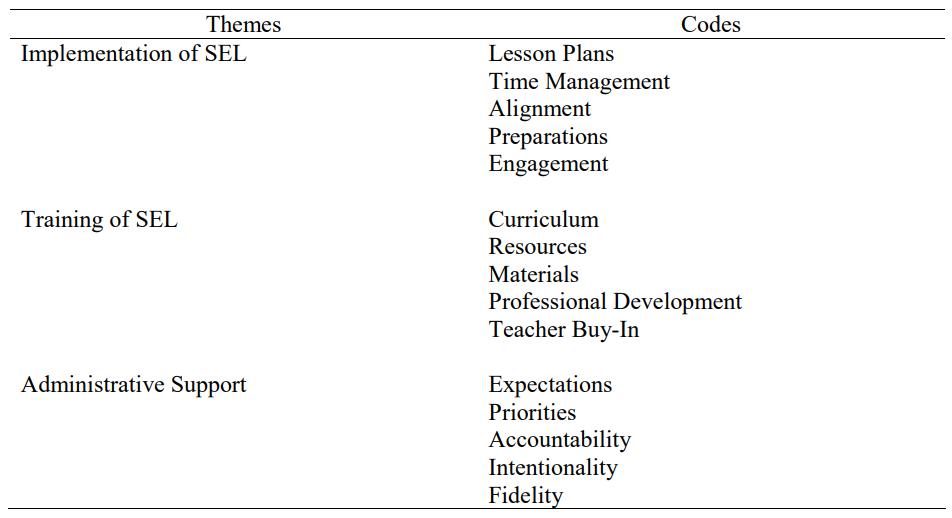
The fourth theme that emerged from the interviews was the challenges of implementing SEL into their lessons. Participants identified common barriers to implementation, including lesson planning, time management, alignment preparedness, and engagement.Areview of recent research on integrating SEL principles into classroom instruction disclosed substantial
acceptance of the concept, yet an absence of specific guidelines regarding its effective and consistent delivery (Berger et al., 2019; Mahoney et al., 2021). The participants shared that the success of any SEL program depends on how well the district is preparing them. To implement SEL activities and strategies into academic instruction, Hoffmann et al. (2020) explained that properly training teachers on how to integrate SEL into their lessons is essential. Participant 8 stated that “it took time from academic instruction to implement SEL…many of my students were not engaged with the activities that were provided.” Participant 10 explained,
“I think their intentions mean well, but some of the lessons do not address all learning styles, and I think some of the stuff they had us doing the students didn’t relate too. I think some of it probably could’ve been better maybe for an elementary setting not middle school.”
Many participants felt that the lesson plans were too general, boring, and excessive for their grade level and subject. Participants expressed the need for further training to utilize districtgenerated lesson plans effectively. Time was unanimously agreed upon by all participants as the most significant obstacle to SEL implementation. Participants expressed that one of the main challenges was the time it took to implement SELinto their lessons. Participant 2 stated,
“I teach math, so my main focus is having to catch them up since this the subject in itself can be challenging…. many students were not engaged with the SEL lesson the school had us doing…. maybe it’s different in reading or social studies, but in math so it cuts into valuable instruction time.”
The majority of participants shared that other teachers were not implementing SEL in their classrooms with fidelity. The lack of a clear definition is a common complaint among SEL detractors (Oliveira et al., 2021). Seven out of 10 participants reported that getting other
colleagues invested was a challenge. Those teachers expressed that it was a waste of time if other teachers were not consistent with it. Participant 5 recalled,
“I didn’t get to implement it all the time because it would cut into my instructional time.”
Despite social and emotional learning's popularity, many education experts remain unconvinced (Effrem & Robbins, 2019; Shriver & Weissberg, 2020). Participant 8 shared,
“With all the stuff the state have us doing with HB-4545, the district have us doing with map testing…. it’s not enough time in the day to really give SEL the attention it would need so it can be successfully implemented. They must think we’re a robot.”
SEL may imply different things to different people (Effrem & Robbins, 2019; Gagnier et al., 2022). Participants overwhelmingly felt that sufficient campus-based training and support were lacking and that districts should train teachers in the respective subjects to implement SEL.
The fifth theme that emerged from teachers’experiences was the lack of training teachers received on SEL.Although there is much support for integrating SEL, Hamilton et al. (2019a)
found that there is a gap between the number of teachers who want to help their students improve their SEL and the number of teachers who have been trained to do so. Participants discussed how they felt more stressed out and less able to perform their jobs well when not given sufficient SEL training. Eight of out the 10 participants reported that there was a lack of training and proper preparation for implementing SEL in their classrooms.All participants felt that there should be more chances for professional development training and assistance. Some participants thought there should be more materials at their disposal, as well as mental health resources. Participant 5 further explained,
“I wish the district would focus more on teaching adults how to respond to classroom behavior in a SEL manner kind of way…how to recognize deregulated behavior better and skills to respond to it as opposed to a power struggle.”
Participants believed adequate help is needed to develop and implement these essential SEL strategies. Most participants believed there should be more preparation before implementing SEL inclusion in the curriculum and that there was a shortage of training in this area for certain disciplines. Participant 4, who taught math, shared, “I received limited training, and the district gave us a script to go off…. I felt like I was just checking boxes and didn’t have the resources needed.”
Participant 7 shared similar thoughts, “the training I received didn’t address all learners, they gave us lessons to do, but it lacked differentiation and scaffolding…they think it’s just one size fits all.”
Participant 3 recalled,
“In our professional developments we talk about SEL and go over the data of why its important, but we never really got training…like how does this look, what you want us to do…like can y’all model a lesson for us. I felt lost at times. I just winged it or used the time for the students to catch up with any missing assignments.”
The participants felt that more could be done on behalf of the school and district if SEL implementation was successful in their classrooms. Participants stated that a lack of resources contributed to their inability to integrate SEL in their classes successfully. District and schoolgenerated lessons, age and grade level SEL curriculum, as well as specific facilitated time for SEL training, are some examples.
The sixth theme that emerged from the interviews was the lack of administrative support when utilizing SEL in their classrooms. Most participants expressed a desire for better communication and assistance from an administrative standpoint. Half of the teachers I interviewed stated that they did not have the administrative support. Participant 4 stated,
“Here it is not a priority, it’s not done with fidelity and not everyone is doing it, admin is not as supportive…we just say were doing it because it sounds good, but it’s not emphasized.”
Additionally, as noted by Participant 9,
“I had this one student who would basically ruin it for the whole class and make everyone else get off task, they showed a lack of engagement.”
Participants revealed that teachers were under much stress because they had to teach the SEL curriculum quickly, which cut into their academic instruction. They also needed more time to prepare so the curriculum could be taught correctly.According to Ramirez et al. (2021) schools and districts can further emphasize the significance of teachers' SEL needs by providing time for SEL development during working hours. Participant 4 shared,
“I felt overwhelmed at times because I would have to prepare for SEL and still have lesson planning to do as well. I felt like it was competing priorities.”
Participant 7 stated,
“We are not provided with the resources and materials needed to what they are asking us to do.”
Participant 5, who taught ELAR, recalled,
“Often times I felt that I was being held to a double standard of having to focus on SEL, but then feeling left behind in my content area…they would ding me if my test scores 17 weren’t up to par…I would feel so down, because they want me to do SEL, but then turnaround and complain about scores being low.”
Most participants agreed that school administrators should back teachers, especially when introducing innovative programs and curricula like SEL. Participant 2 felt that having admin support created less stress, and by Participant 10 further noted,
“Admin support shows that they are practicing what they are preaching to us.”
When the administration supports the teacher without our needs, we can better support students with their needs (Participant 4).
Although numerous studies have underscored the significance of SEL support in the classroom (Cipriano et al., 2022; Herrenkohl et al., 2020; Mahoney et al., 2021), gathering the perspectives of teachers who implement SEL components and techniques in their pedagogy provided further insight into the strategies teachers employed when incorporating SEL. This qualitative phenomenology study investigated middle school core subject teachers' lived experiences and understandings of utilizing social-emotional learning strategies in the classroom.
Two research questions shaped this study so that we could learn more about the issue. This information is critical for education because it will help us understand how to utilize social and emotional learning techniques in the classroom. Understanding teachers' experiences with SEL implementation might assist districts and schools in ensuring that teachers are adequately prepared to provide core SEL components. The participants discussed several factors
contributing to the lack of SEL strategies, including implementation training in professional development, timing, and administrative support.
However, significant progress has been made in ensuring teachers have access to SEL tools and support to successfully integrate SEL in their classrooms. The lack of consistency and continuity in implementation, according to Schonert-Reichl (2017), originated from misconceptions about how teachers combine education with their topic and SEL. Understanding the curriculum can help teachers support their students in the classroom.Additional research has demonstrated the importance of SEL programs and how their implementation aids students in emotional regulation via focused collaborative learning (Mahoney et al., 2021; Yang et al., 2018; Zieher et al., 2021). Teachers need to learn about and use SEL to build, manage, and create supportive and successful relationships with their students in the classroom. The participants also described their knowledge and experience with SEL more favorably when they had administrative support that assisted their efforts in the classroom.
SEL must be consciously and continuously integrated with teaching specific school skills and competencies (Granger et al., 2020). Teachers play a significant role in implementing SEL to ensure all students are integrated (Ferreira et al., 2020; Granger et al., 2020). Participants believed that professional development would be beneficial in maintaining SEL in their classrooms. Teacher training and development are crucial for SEL initiatives to be successful (Meyers et al., 2019). Creating an equitable learning setting is essential for implementing systemic social and emotional learning.Asuccessful rollout requires understanding teacher experiences with SEL and the support and resources they need for effective implementation. (Eklund et al., 2018; Yang et al., 2018). With this knowledge, educator training programs can be
developed to assist teachers in understanding better how to implement SEL strategies in the classroom effectively.
Conclusions
The purpose of this qualitative phenomenological study was to explore the lived experiences of and understand middle school core content teachers’perceptions of how to utilize social-emotional learning strategies within the classroom setting. The problem addressed by this study was that core content middle school teachers were often unprepared to apply socialemotional learning strategies effectively and frequently overlooked and underutilized these strategies. This in-depth examination of SEL method integration sought to identify possible obstacles to SEL implementation in the classroom. Since teachers are the primary facilitators of SE skills instruction, it was vital to understand more about them.
There has been significant progress in ensuring teachers have access to SEL tools and support to successfully integrate SEL in their classrooms. The findings indicate that teachers need additional support and training in implementing SEL successfully.Additionally, professional development opportunities should be more frequent to successfully assist teachers as they transition to implementing social-emotional learning. Research has demonstrated that if administrators were cognizant of the need for support, teachers could enhance their skills in implementing SEL within the classroom (Atwell & Bridgeland, 2019; Dusenbury et al., 2018). When SEL is implemented in the classroom, it fosters equitable learning environments in which students are actively engaged in learning and growing in their social, emotional, and intellectual capacities (Bailey et al., 2019; Cipriano et al., 2023). Through this research, teachers can understand how to utilize SEL principles independently and efficiently. The knowledge acquired
from this research study will assist districts and schools in ensuring that teachers are adequately prepared to provide core SEL components.
Agustina, M., Kristiawan, M., & Tobari, M. (2021). The influence of principal’s leadership and school’s climate on the work productivity of vocational pharmacy teachers in Indonesia International Journal of Educational Review, 3(1), 63-76.
Allbright, T.N., Marsh, J.A., Kennedy, K.E., Hough, H.J. and & McKibben, S. (2019), "Social emotional learning practices: insights from outlier schools", Journal of Research in Innovative Teaching & Learning, 12(1), pp. 35-52. https://doi.org/10.1108/JRIT-022019-0020
Amankwaa, L. (2016). Creating Protocols for Trustworthiness in Qualitative Research. Journal of Cultural Diversity, 23, 121-127.
Atwell, M. N., & Bridgeland, J. M. (2019). Ready to lead: A 2019 update of principals’ perspectives on how social and emotional learning can prepare children and transform schools. Washington, DC: Civic with Hart ResearchAssociates.
Bailey, R., Stickle, L., Brion-Meisels, G., & Jones, S. M. (2019). Re-imagining social emotional learning: Findings from a strategy-based approach. Phi Delta Kappan, 100(5), 5358. doi:10.1177/0031721719827549
Berger R., Berman S., Garcia J., Deasy J. (2019). A practice agenda in support of how learning happens. National Commission on Social, Emotional, andAcademic Development, Aspen Institute. https://www.aspeninstitute.org/wpcontent/uploads/2025/05/aspen_practice_final_web_op timized.pdf
Bloomberg, L. D., & Volpe, M. (2019). Completing your qualitative dissertation: A road map from beginning to end (4th ed.). Sage.
Cipriano, C., Naples, L., Zieher,A. K., Durlak, J., Strambler, M. J., Eveleigh,A., … Chow, J. (2022). The State of Evidence for Social and Emotional Learning: A Contemporary Meta-Analysis of Universal School-Based SEL Interventions
https://doi.org/10.17605/OSF.IO/6PQX2
Cipriano, C., Strambler, M. J., Naples, L., Ha, C., Kirk, M.A., Wood, M. E., … Durlak, J. (2023). Stage 2 Report: The state of the evidence for social and emotional learning: A contemporary meta-analysis of universal school-based SEL interventions.
https://doi.org/10.31219/osf.io/mk35u
Collaborative forAcademic, Social, and Emotional Learning (CASEL). (2019). The CASEL guide to schoolwide SEL essentials:Aprintable compilation of key activities and tools for school teams. https://casel.org/the-casel-guide-to-schoolwide-sel-essentials/
Collaborative forAcademic, Social, and Emotional Learning (CASEL). (2020a). CASEL’S SEL
FRAMEWORK: What Are the Core Competence Areas and Where Are They Promoted?
Chicago, IL: Collaborative forAcademic, Social, and Emotional Learning (CASEL).
Collaborative forAcademic, Social and Emotional Learning (CASEL). (2020b). What is SEL?
https://casel.org/what-is-sel
Davis, K., Hammett, R., Seagraves-Robinson, T., Christian, D. D., & Low, G. (2021).
Social emotional learning:Aframework for practice and pedagogy. AI Practitioner, 23(4), 91–101. https://doi.org/10.12781/978-1-907549-49-6-17
Durlak, J.A., Weissberg, R.P., Dymnicki,A.B., Taylor, R.D., & Schellinger, K.B. (2011).
The impact of enhancing students' social and emotional learning:Ameta-analysis of school -based universal interventions. Child Development, 82, 405-432.
Dusenbury, L., & Weissberg, R. P. (2018). Emerging insights from states’ efforts to strengthen social and emotional learning. Chicago: Collaborative forAcademic, Social, and Emotional Learning.
Effrem, K., & Robbins, J. (2019). Social-emotional learning: K-12 education as new age nanny state. White Paper No. 192. Pioneer Institute for Public Policy Research.
Elias, M. (2019). What if the doors of every schoolhouse opened to social-emotional learning tomorrow: Reflections on how to feasibly scale up high-quality SEL. Educational Psychologist, 54(3), 233-245. doi:10.1080/00461520.2019.1636655
Ferreira, M., Martinsone, B., & Talić, S. (2020). Promoting sustainable social emotional learning at school through relationship-centered learning environment, teaching methods and formative assessment. Journal of Teacher Education for Sustainability, 22(1) 21-36. https://doi.org/10.2478/jtes-2020-0003
Gagnier, K. M., Okawa, A., and Jones-Manson, S. (2022). Designing and implementing sel programs to promote equity. White paper produced byAnLar and the Office of Elementary and Secondary Education: Education, Innovation, and Research Program (EIR).
Granger, K. L., Sutherland, K. S., Conroy, M.A., Hetrick,A.A., & Parnell, E. (2020). Barriers and facilitators to implementation of BEST in CLASS. Exceptionality, 28(3), 209-221. https://doi.org/10.1080/09362835.2020.1727335
Grant, S., Hamilton, L. S., Wrabel, S. L., Gomez, C. J., Whitaker,A., Leschitz, J. T., Unlu, F.,
Chavez-Herrerias, E.R., Baker, G., Barrett, M., Harris, M., & Ramos,A. (2017).
Social and emotional learning interventions under the every student succeeds act: Evidence Review. Research Report. RR-2133-WF. RAND Corporation.
Hamilton, L.S., Doss, C.J., & Steiner, E.D. (2019a). Teacher and principal perspectives on social and emotional learning in America’s schools: Findings from theAmerican Educator Panels.
Herrenkohl, T. I., Jones, T. M., Lea, C. H., & Malorni,A. (2020). Leading with data: Using an impact-driven research consortium model for the advancement of social emotional learning in schools. The American journal of orthopsychiatry, 90(2), 283–287. https://doi.org/10.1037/ort0000435
Hoffmann, J. D., Brackett, M.A., Bailey, C. S., & Willner, C. J. (2020). Teaching emotion regulation in schools: Translating research into practice with the RULER approach to social and emotional learning. Emotion, 20(1), 105–109.
https://doi.org/10.1037/emo0000649.supp (Supplemental)
Jones, D., Crowley, D. M., & Greenberg, M. T. (2017). “Improving Social Emotional Skills in Childhood Enhances Long-Term Well-Being and Economic Outcomes,” Edna Bennet Pierce Prevention Research Center: Pennsylvania State University.
Jones, S., Bailey, R., Bush, K., Kahn, J., & Wallace Foundation. (2018). Preparing for effective SEL implementation. Harvard University Graduate School of Education.
Kasikci, F., & Ozhan, M. B. (2021). Prediction of academic achievement and happiness in middle school students: The role of social-emotional learning skills i.e.: Inquiry in Education, 13(2). Retrieved from: https://digitalcommons.nl.edu/ie/vol13/iss2/15
Kaspar, K. L., & Massey, S. L. (2023). Implementing social-emotional learning in the elementary classroom. Early Childhood Education Journal, 51(4), 641-650.
https://doi.org/10.1007/s10643-022-01324-3
Kaye,A. J., Pejic, V., Moffa, K., Jordan, M., Dennery, K. M., & DeMaso, D. R. (2022). Using professional development workshops to support school professionals’capacities to promote students’social, emotional, and behavioral health. Psychology in the Schools, 59(4), 866–880. https://doi.org/10.1002/pits.22652
Kiger, M. E., & Varpio, L. (2020). Thematic analysis of qualitative data:AMEE Guide No. 131. Medical teacher, 42(8), 846–854. https://doi.org/10.1080/0142159X.2020.175503
Korstjens, I., & Moser, A. (2018) Series: Practical guidance to qualitative research. Part 4: Trustworthiness and publishing, European Journal of General Practice, 24(1), 120.
Mahoney, J. L., Weissberg, R. P., Greenberg, M. T., Dusenbury, L., Jagers, R. J., Niemi, K.,
Schlinger, M., Schlund, J., Shriver, T. P., VanAusdal, K., & Yoder, N. (2021). Systemic social and emotional learning: Promoting educational success for all preschool to high school students. American Psychologist, 76(7), 1128-1142.
https://doi.org/10.1037/amp0000701
Martinsone, B., Supe, I., Stokenberga, I., Damberga, I., Cefai, C., Camilleri, L., Bartolo, P., O’Riordan, M. R., & Grazzani, I. (2022). Social emotional competence, learning outcomes, emotional and behavioral difficulties of preschool children: Parent and teacher evaluations. Frontiers in Psychology, 13, 1–12.
https://doi.org/10.3389/fpsyg.2021.76078
Meyers, D. C., Domitrovich, C. E., Dissi, R., Trejo, J., & Greenberg, M. T. (2019). Supporting systemic social and emotional learning with a schoolwide implementation model. Evaluation and Program Planning, 73, 53-61.
http://dx.doi.org/10.1016/j.evalprogplan.2018.11.005
Moustakas, C. (1994). Phenomenological research methods. SAGE Publications, Inc.
National Commission for the Protection of Human Subjects of Biomedical and Behavioral Research. (1979). The Belmont report: Ethical principles and guidelines for the protection of human subjects of research. U.S. Department of Health and Human Services. Retrieved from https://www.hhs.gov/ohrp/regulations-and-policy/belmontreport/read-the belmont-report/index.html
Nowell, L. S., Norris, J. M., & White, D. E. (2017). Thematic analysis: Striving to meet the trustworthiness criteria. International Journal of Qualitative Methods 16, 1-13.
Oliveira, S., Roberto, M. S., Pereira, N. S., Marques-Pinto,A., & Veiga-Simão,A. M. (2021). Impacts of social and emotional learning interventions for teachers on teachers’ outcomes:Asystematic review with meta-analysis. Frontiers in Psychology, 12 https://doi.org/10.3389/fpsyg.2021.677217
Osher, D., Mayer, M., Jagers, R., Kendziora, K., & Wood, L., (2019). Keeping Students Safe and Helping Them Thrive: A Collaborative Handbook on School Safety, Mental Health, and Wellness [2 volumes]. Retrieved from http://publisher.abc-clio.com/9781440854149.
Ramirez, T., Brush, K., Raisch, N., Bailey, R., & Jones, S. M. (2021). Equity in social emotional learning (SEL) programs:Acontent analysis of equitable practices in PreK-5 SEL Programs. Frontiers in Education, 6, 1-14. https://doi.org/10.3389/feduc.2021.679467
Saldana, J. M. (2015). The coding manual for qualitative researchers (3rd ed.). SAGE Publications.
Sandilos, L. E., Neugebauer, S. R., DiPerna, J. C., Hart, S. C., & Lei, P. (2023). Social emotional learning for whom? Implications of a universal SEL program and teacher well-being for teachers’interactions with students. School mental health: A Multidisciplinary Research and Practice Journal, 15(1), 190–201. https://doi.org/10.1007/s12310-022-09543-0
Schonert-Reichl, K.A. (2017). Social and emotional learning and teachers. The Future of Children, 27(1), 137–155. http://www.jstor.org/stable/44219025
Shenton,A. K. (2004). Strategies for ensuring trustworthiness in qualitative research projects. Education for Information, 22, 63-75.
Shriver, T., & Weissberg, R. (2020). A response to constructive criticism of social and emotional learning. Phi Delta Kappan, 101(7), 52-57
Stahl, N., & King, J. (2020). Expanding approaches for research: Understanding and using trustworthiness in qualitative research. Journal of Development Education, 44(1), 27-28.
Taylor,A. J., & Lein, A. E. (2023). Integrating social and emotional learning (SEL) into academic content:Apath for education preparation programs. Kentucky Journal of Excellence in College Teaching & Learning, 19, 38–55.
Taylor, R., Oberle, E., Durlak, J.A., & Weissberg, R. P. (2017). Promoting positive youth development through school-based social and emotional learning interventions:Ametaanalysis of follow-up effects. Child Development, 88, 1156–1181. https://doi.org/10.1111/cdev.12864
United States Department of Education. (2021). Supporting child and student social, emotional, behavioral, and mental health needs. Retrieved from https://www2.ed.gov/documents/students/supporting-child-student-social emotionalbehavioral-mental-health.pdf
Williams, M., & Moser, T. (2019). The art of coding and thematic exploration in qualitative research. International Management Review, 15(1), 45-55, 71-72.
Yang, C., Bear, G. G., & May, H. (2018). Multilevel associations between school-wide social emotional learning approach and student engagement across elementary, middle, and high schools. School Psychology Review, 47(1), 45-61.
Yoder, N., Ward, A., & Wolforth, S. (2021). Instructional Practices That Integrate Equity
Centered Social, Emotional, andAcademic Learning (Issue Brief No. 21 December 2021). American Institutes for Research (AIR).
https://www.air.org/resource/brief/instructional-practices-integrate-equity-centeredsocial-emotional-and-academic
Zieher, A. K., Cipriano, C., Meyer, J. L., & Strambler, M. J. (2021). Educators’ implementation and use of social and emotional learning early in the COVID-19 pandemic. School Psychology, 36(5), 388-397. https://doi.org/10.1037/spq0000461

Volume 1, Number 2, 2025
Introduction
Received March 4 2025
Revised June 24 2025
Accepted July 22 2025
The underrepresentation ofAfricanAmerican male leaders in K–12 education raises critical concerns related to equity, student achievement, and school climate. Research consistently links leadership diversity to positive outcomes such as improved student performance, increased teacher retention, and more inclusive school cultures (Fergus et al., 2014; Boyce & Chouinard, 2017). Yet, AfricanAmerican male administrators remain disproportionately few in number due to systemic barriers, including biased hiring practices, limited access to professional networks, and culturally exclusionary work environments.
Grounded in Bandura’s Social Learning Theory and Maslow’s Hierarchy of Needs, this study examines howAfricanAmerican male administrators navigate both inclusive environments where diversity and cultural responsiveness are affirmed and exogenic contexts that marginalize or isolate them. These frameworks provide insight into how role modeling, observational learning, and motivational needs influence leadership engagement, persistence, and professional growth. To guide this exploration, the following research questions were developed:
© Written by Rock Magis Published in TABSE Research Journal. Anyone may reproduce, distribute, translate and create derivative works of this article (for both commercial and non-commercial purposes), subject to full attribution to the original publication and author(s).
1. What perceived factors motivateAfricanAmerican male leaders to pursue leadership roles, such as district leadership or principalship, within K–12 schools?
2. What are the specific challenges and barriers thatAfricanAmerican male leaders encounter while serving in educational leadership roles within K–12 schools?
3. What strategies and practices can school districts implement to effectively recruit and retainAfricanAmerican male leaders in K–12 schools?
The following literature review situates these questions within the broader scholarly conversation, examining the historical, theoretical, and empirical foundations that inform this study’s conceptual framework.
Literature Review
The underrepresentation ofAfricanAmerican male leaders in K–12 education stems from historical and systemic barriers dating back to the aftermath of Brown v. Board of Education (1954), which inadvertently led to the widespread displacement of Black educators (Karpinski, 2006; Will, 2019). This disruption to leadership pipelines continues today, withAfrican American males comprising only a small fraction of educational leaders nationally. Integrating Bandura’s Social Learning Theory and Maslow’s Hierarchy of Needs provides a cohesive framework for understanding the challenges and opportunitiesAfricanAmerican male leaders face (see Figure 1).

1
Social Learning Theory and Maslow's Hierarchy of Needs
Social Learning Theory emphasizes the importance of relatable role models; research demonstrates that students perform better and develop higher aspirations when taught by educators who share their racial background (Wells-Wilbon & Holland, 2001). In turn, Maslow’s theory highlights the necessity of meeting basic and psychological needs, such as belonging, esteem, and self-actualization, forAfricanAmerican male leaders to persist and thrive. These needs are often compromised in exogenic environments, where cultural misalignment and marginalization prevail.
Intersectional factors, such as race, gender, and professional roles, compound the barriers faced byAfricanAmerican male leaders. They encounter unique forms of "Racism 2.0" (Hayes & Fasching-Varner, 2015), which manifests as covert bias, tokenization, and relegation to disciplinarian roles. These experiences impede fulfillment of higher-order psychological needs, contributing to professional isolation and higher attrition rates. Studies in Texas and nationally reveal that AfricanAmerican male educators face slower career progression and disproportionate scrutiny despite equal qualifications (Bailes & Guthery, 2020).
Empirical studies such as Project 2000 (Wells-Wilbon & Holland, 2001) show measurable academic benefits whenAfricanAmerican male role models engage with students, reinforcing Social Learning Theory. Similarly, mentoring programs like Boston’s Male Educators of Color Network and the Call Me MISTER initiative demonstrate how structured support systems enhance retention by addressing Maslow’s psychological needs through professional development and community-building.
Inclusive educational environments affirm diversity, support cultural responsiveness, and foster leadership growth, allowingAfricanAmerican male leaders to fulfill both social and esteem needs. These settings correlate with higher retention rates, stronger school climate, and improved student outcomes (Fergus et al., 2014; Boyce & Chouinard, 2017). Conversely, exogenic environments lacking cultural alignment perpetuate isolation, hinder leadership development, and contribute to turnover.
For district administrators, policymakers, and community stakeholders, these findings underscore the importance of intentional recruitment and retention strategies. Culturally responsive pedagogy, mentorship programs, equitable hiring practices, and robust leadership development pathways must be institutionalized. Implementing selection protocols like the Haberman Protocols can further identify equity-driven leaders prepared to navigate diverse educational settings (Hill-Jackson et al., 2018).
In summary, addressing the underrepresentation ofAfricanAmerican male leaders requires a systemic approach that integrates historical awareness, theoretical insight, and
practical strategies. By aligning institutional practices with the dual frameworks of Social Learning Theory and Maslow’s Hierarchy of Needs, educational systems can create environments whereAfricanAmerican male leaders not only enter but also thrive in leadership roles, ultimately benefiting all students.
Methodology
This study is designed to investigate the perceptions, challenges, and strategies related to the recruitment and retention ofAfricanAmerican male leaders in K-12 schools. Through a qualitative study approach, data will be collected via semi-structured interviews to provide a comprehensive understanding of these leaders' experiences. The study’s methodology ensures ethical rigor, with IRB approval, informed consent, and strict confidentiality protocols in place. Data analysis will follow a structured coding process, supported by member checking to enhance the credibility and reliability of the findings. This approach will offer valuable insights into effective strategies for recruiting and retaining AfricanAmerican male leaders in education, contributing to the broader efforts to address diversity in school leadership.
Findings
This phenomenological study explored the perceptions, challenges, and benefits experienced byAfrican American male leaders in K-12 administration, focusing on their underrepresentation and strategies for recruitment and retention. By employing semi-structured interviews with 16 participants, this research provided a deep, first-person understanding of the experiences ofAfricanAmerican male leaders within a large urban school district. Table 1 provides detailed information about the participants' demographics in the semi-structured interviews.
Participant Demographic for Semi-Structured Interviews

The study utilizedAlbert Bandura’s Social Learning Theory andAbraham Maslow’s
Hierarchy of Needs to frame the analysis, highlighting the role of observational learning, environmental influences, and motivational factors in shaping participants’career paths and leadership styles. The interviews, conducted via Zoom, offered a flexible and accessible setting, ensuring confidentiality while facilitating candid discussions. Participants represented diverse roles, including principals, assistant principals, and district-level administrators, with leadership
tenures ranging from 1 to 18 years. Their experiences were analyzed through open, axial, and selective coding, resulting in nine key themes categorized under three central research questions.
Research Question 1 explored the factors motivatingAfrican American male leaders to pursue leadership roles in K-12 education. Three central themes emerged (see Table 2):
1. Mentor Influence & Self-Efficacy: Participants emphasized the pivotal role of mentors in recognizing their potential, providing guidance, and fostering confidence. Social Learning Theory highlighted how observing and modeling mentors’behaviors shaped their leadership trajectories.
2. Self-Actualization through Service: Participants were driven by a desire to give back to their communities and address systemic inequities. Rooted in Maslow’s Hierarchy of Needs, their motivation stemmed from personal fulfillment and a commitment to creating positive change.
3. Purpose-Driven Leadership: Many participants saw their roles as an opportunity to challenge systemic inequities and mentor others. Their leadership was guided by a sense of purpose, reinforced by the observed impact of their efforts on students and colleagues. Table 2 provides an overview of the motivational factors forAfricanAmerican male leaders in K-12 leadership roles, aligned with relevant theoretical frameworks.
Table 2
Research Question 1: Motivational Factors for African American Males Leaders in K-12 Leadership Roles, Aligned with Theoretical Frameworks

Research Question 2 examined the challenges and barriers faced byAfricanAmerican male leaders. Three themes emerged (see Table 3):
1.Authentic Leadership vs. SocialAcceptance: Participants navigated tensions between maintaining authenticity and conforming to societal expectations, often being stereotyped as disciplinarians. Maslow’s framework reaffirms the internal conflict between belonging and selfactualization.
2. Recognition and Self-Esteem Needs: Participants frequently felt overlooked and undervalued, needing to constantly prove their capabilities. This struggle highlighted the systemic bias in educational institutions and the unmet need for esteem and validation.
3. Structural Barriers: Systemic inequities, limited professional networks, and racial stereotypes hindered career advancement. Social Learning Theory emphasized the role of resilience and vicarious reinforcement in overcoming these barriers, though participants’ experiences emphasized the persistent challenges within the system. Table 3 provides an overview of the challenges and barriers faced byAfricanAmerican male leaders in K-12 education, aligned with relevant theoretical frameworks.
Table 3
Research Question 2: Challenges and Barriers for African American Leaders in K-12 Education
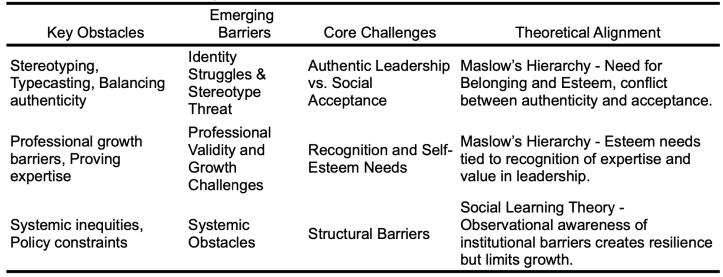
Research Question 3 focused on strategies for recruiting and retainingAfricanAmerican male leaders in K-12 schools. Three key approaches were identified (see Table 4):
1. Effective Retention Strategies: Participants highlighted the importance of mentorship, competitive compensation, and intentional support to ensure security and belonging.
2. Inclusive, Empowering Culture:Aculture that values diversity, fosters community, and promotes equity was critical for retention. Participants advocated for mentorship programs, peer networks, and initiatives to supportAfricanAmerican male leaders.
3. Structured Growth Opportunities: Clear pathways for career progression, such as aspiring principal programs, were essential for professional development and fulfilling selfactualization needs. Organizations like the Texas Alliance of Black School Educators provided valuable support for leadership growth. Table 4 provides an overview of strategies for recruiting and retaining AfricanAmerican male leaders in K-12 education, aligned with relevant theoretical frameworks.
Table 4

While the study revealed valuable insights, limitations included a small sample size, reliance on self-reported data, and potential researcher bias. These factors may limit the generalizability of the findings. Nonetheless, the study offers significant implications for practice. Educational institutions must address systemic biases, promote inclusive cultures, and provide structured opportunities for growth to supportAfricanAmerican male leaders. Intentional recruitment and retention strategies, mentorship programs, and professional development initiatives are vital to fostering diversity and ensuring thatAfricanAmerican male leaders thrive in their roles.
This research reinforces the resilience and transformative potential ofAfricanAmerican male leaders, whose presence is essential for creating equitable educational environments. By addressing systemic barriers and amplifying their contributions, schools can cultivate leaders who positively impact students, educators, and the broader community. These findings serve as a call to action for policymakers and educational institutions to create a more inclusive and supportive leadership landscape.
This phenomenological study explored the lived experiences ofAfricanAmerican male leaders in K-12 administration, with a focus on their recruitment, retention, and the systemic challenges they face. By employing qualitative methods, including semi-structured interviews, the research aimed to uncover the perceptions, challenges, and benefits these leaders experience in their roles.Albert Bandura’s Social Learning Theory andAbraham Maslow’s Hierarchy of Needs provided the theoretical frameworks to analyze how mentorship, environmental influences, and motivational factors shape the career paths and leadership styles ofAfrican American male leaders.
Through thematic analysis of qualitative data, nine key themes emerged, offering a comprehensive understanding of the factors that influence their career journeys:
1. Mentor Influence & Self-Efficacy: Mentorship played a pivotal role in inspiring confidence and leadership aspirations, with participants modeling behaviors and attitudes observed in their mentors.
2. Self-Actualization through Service: Leadership was often seen as a pathway for personal fulfillment and an opportunity to address systemic inequities, positively impacting marginalized communities.
3. Purpose-Driven Leadership:Adeep commitment to challenging inequities and serving as role models fueled participants’leadership ambitions, demonstrating the power of purpose in driving systemic change.
4.Authentic Leadership vs. SocialAcceptance: Participants faced tensions between maintaining authenticity and navigating societal expectations, often being relegated to disciplinarian roles due to racial stereotypes.
5. Recognition and Self-Esteem Needs: Systemic biases often hindered participants' ability to gain recognition and validation for their leadership abilities, affecting their self-esteem and professional growth.
6. Structural Barriers: Challenges such as racial stereotyping, limited access to professional networks, and inequities in resources constrained participants’career advancement.
7. Effective Retention Strategies: Participants highlighted the importance of intentional support, such as competitive compensation, mentorship, and acknowledgment of their unique contributions.
8. Inclusive, Empowering Culture:Aculture that fosters belonging, diversity, and respect was deemed essential for retainingAfricanAmerican male leaders.
9. Structured Growth Opportunities: Professional development programs and clear pathways for career progression, tailored to their needs, were critical for fostering long-term success.
Conclusion
This study emphasizes both the enduring challenges and the untapped potential ofAfrican American male leaders in K–12 education. While systemic barriers, racial biases, and professional isolation persist, these leaders demonstrate resilience, purpose, and a commitment to shaping inclusive and equitable learning environments. Their presence is not only symbolic, it directly influences student achievement, school culture, and broader community trust in educational institutions.
For districts and policymakers, the message is clear: fostering a diverse leadership landscape requires intentional action. Targeted recruitment, sustained mentorship, and leadership development structures that affirm identity and capability must move from aspiration to standard
practice. Inclusive environments whereAfricanAmerican male leaders are valued and empowered benefit not only these individuals but the entire educational ecosystem.
Above all, this study affirms:AfricanAmerican male leaders matter. Their journeys, challenges, and triumphs shape not just schools, but the legacy of educational equity for generations to come. Their leadership is not an exception, it is essential.
Bailes, L. P., & Guthery, S. (2020). Held down and held back: Systematically delayed principal promotions by race and gender. AERA Open, 6(3), 1–15.
https://doi.org/10.1177/2332858420940331
Boyce,A. S., & Chouinard, J.A. (2017). Evaluating culturally responsive evaluation: Exploring the theory, practice, and evidence. American Journal of Evaluation, 38(4), 431–445.
https://doi.org/10.1177/1098214016643182
Fergus, E., Noguera, P., & Martin, M. (2014). Schooling for resilience: Improving the life trajectories of Black and Latino boys. Harvard Education Press.
Hayes, C., & Fasching-Varner, K. J. (2015). Racism 2.0 and the death of social and cultural foundations of education:Acritical conversation. Journal of Educational Foundations, 28(1–2), 39–56.
Hill-Jackson, V., Stafford, D., James, M. C., & Hartlep, N. D. (2018). How to hire the best school leaders using Martin Haberman’s protocols for selecting “Star” teachers and principals (White paper). Houston, TX: The Haberman Educational Foundation.
Karpinski, C. F. (2006). Bearing the burden of desegregation: Black principals and Brown. Urban Education, 41(3), 237–276. https://doi.org/10.1177/0042085906287283
Wells-Wilbon, R., & Holland, S. (2001). Social learning theory andAfricanAmerican male educational success:Areview of Project 2000. Journal of African American Men, 5(3), 43–58.
Will, M. (2019,August 21). Black educators lost ground after Brown v. Board. What now? Education Week. https://www.edweek.org/leadership/black-educators-lost-ground-afterbrown-v-board-what-now/ 2019/08










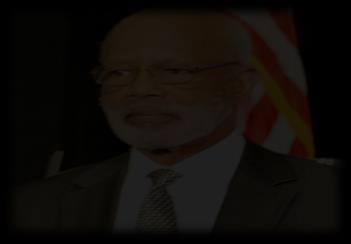












TABSE Research Journal




